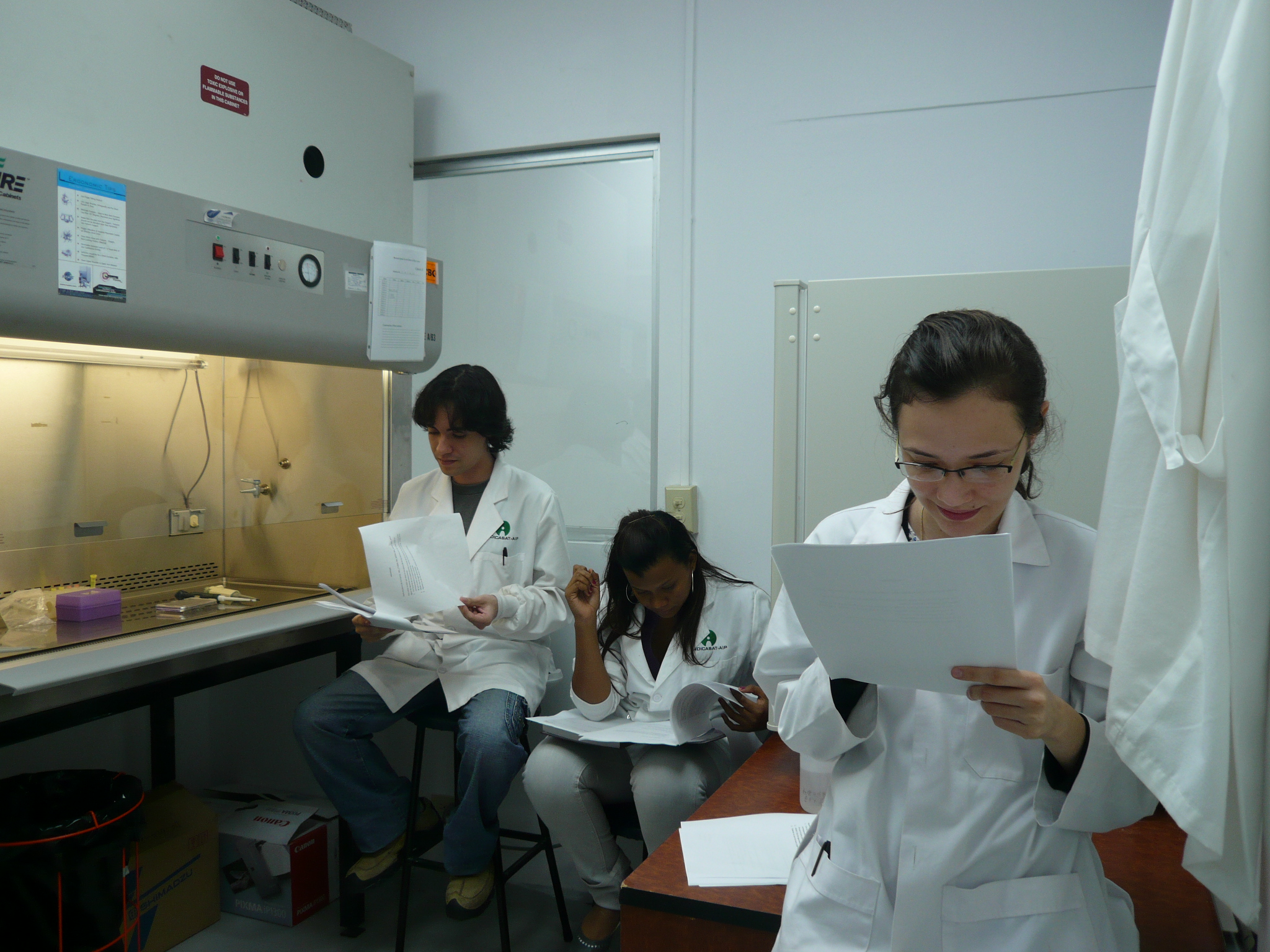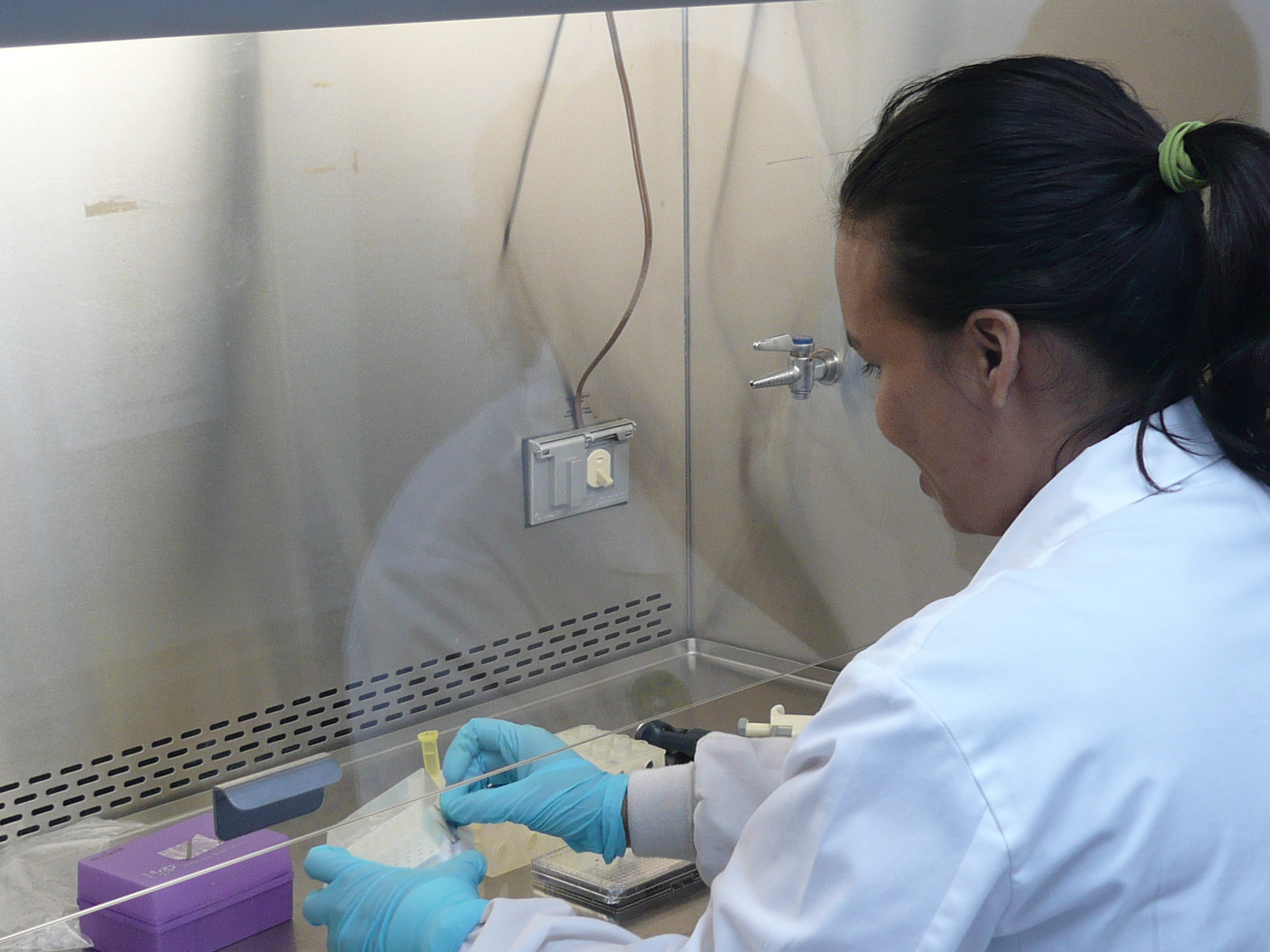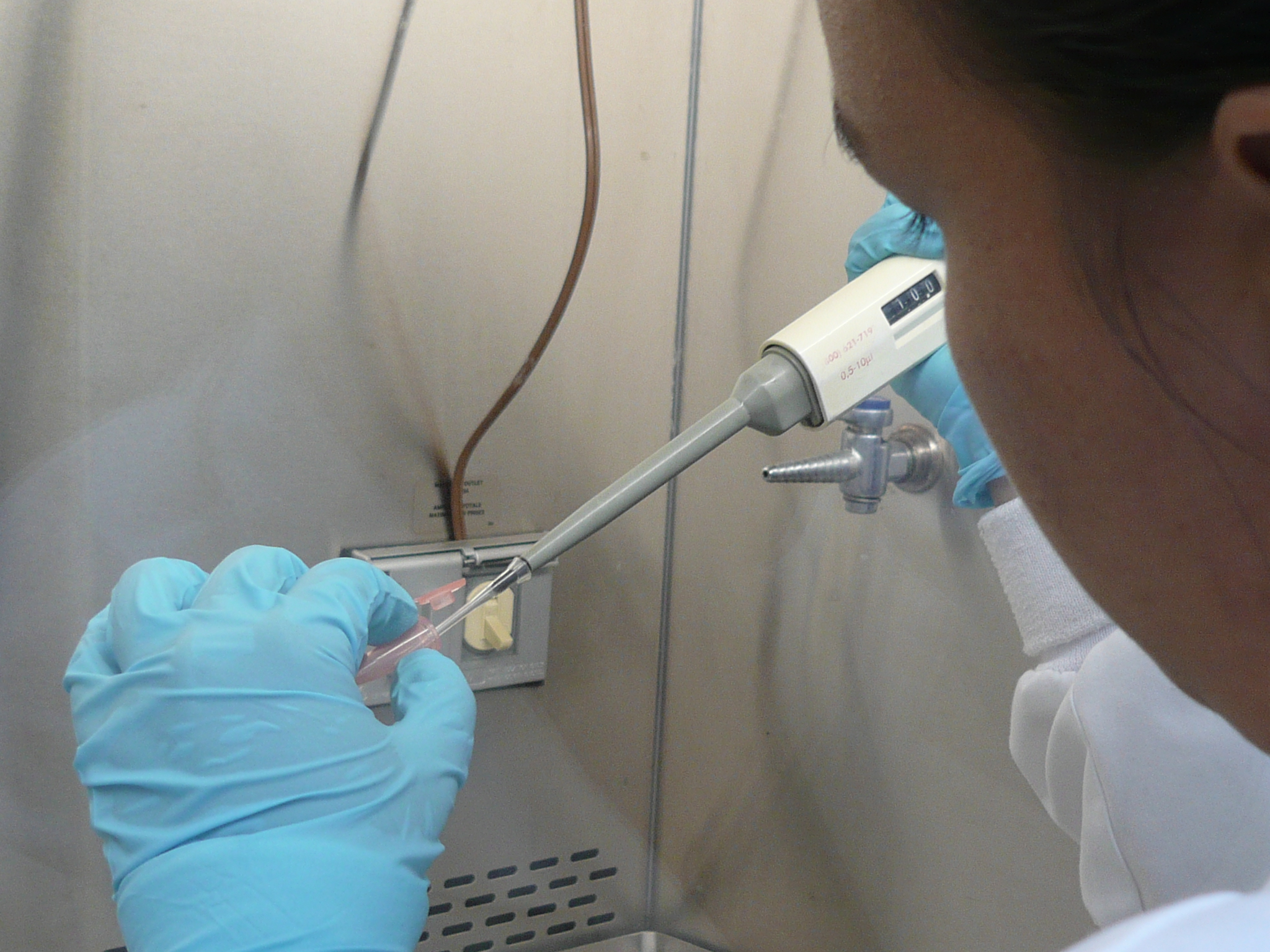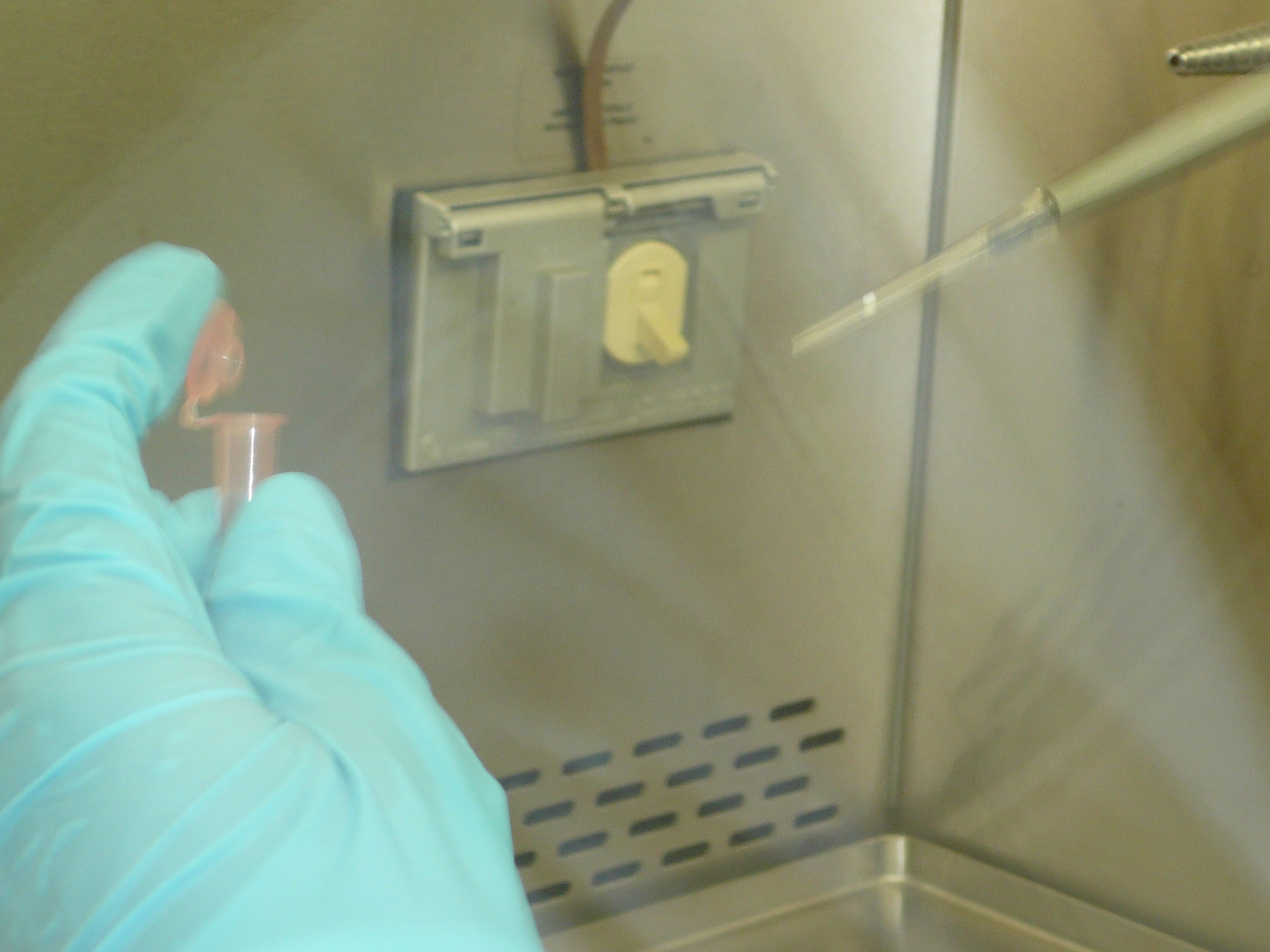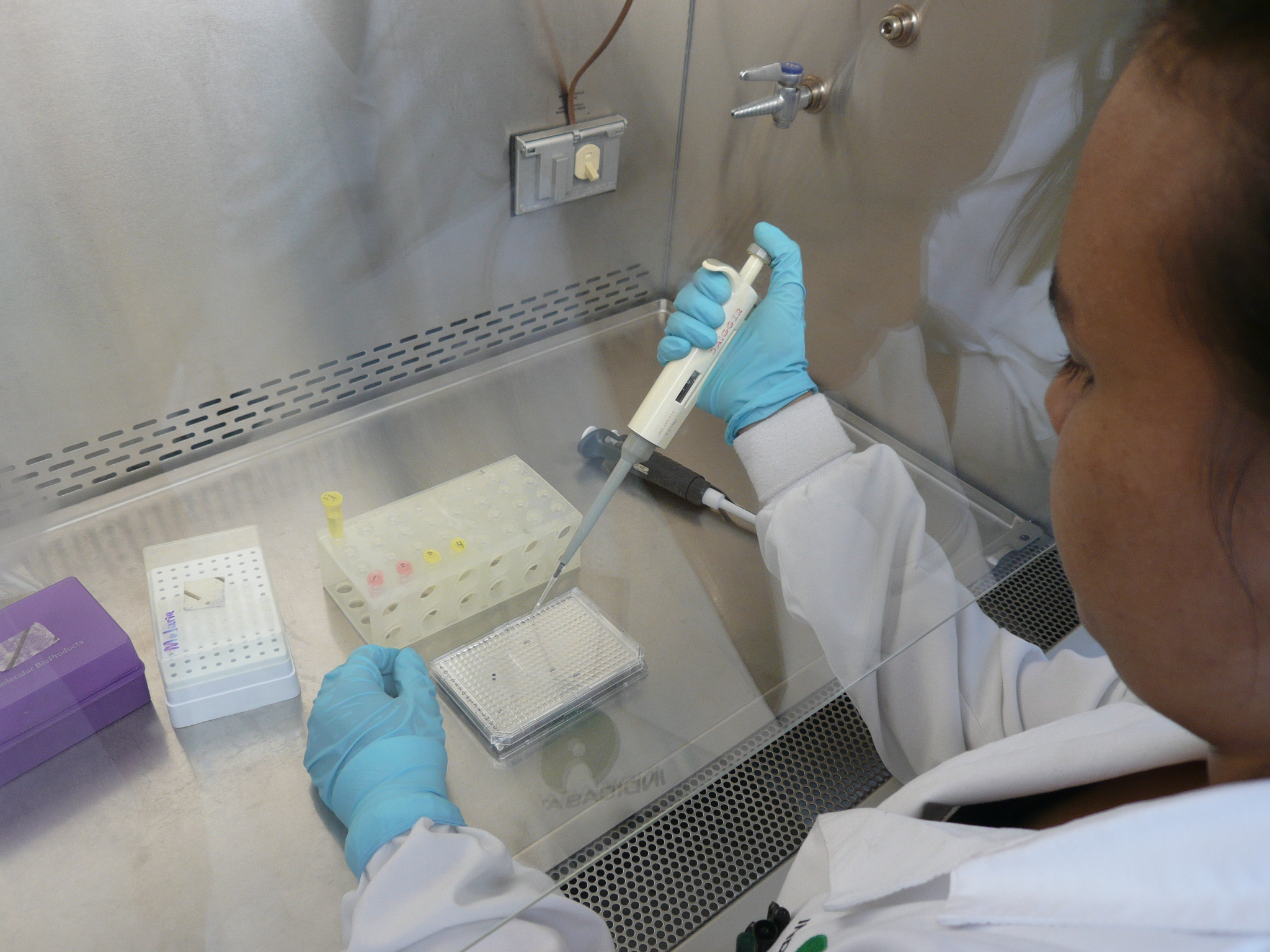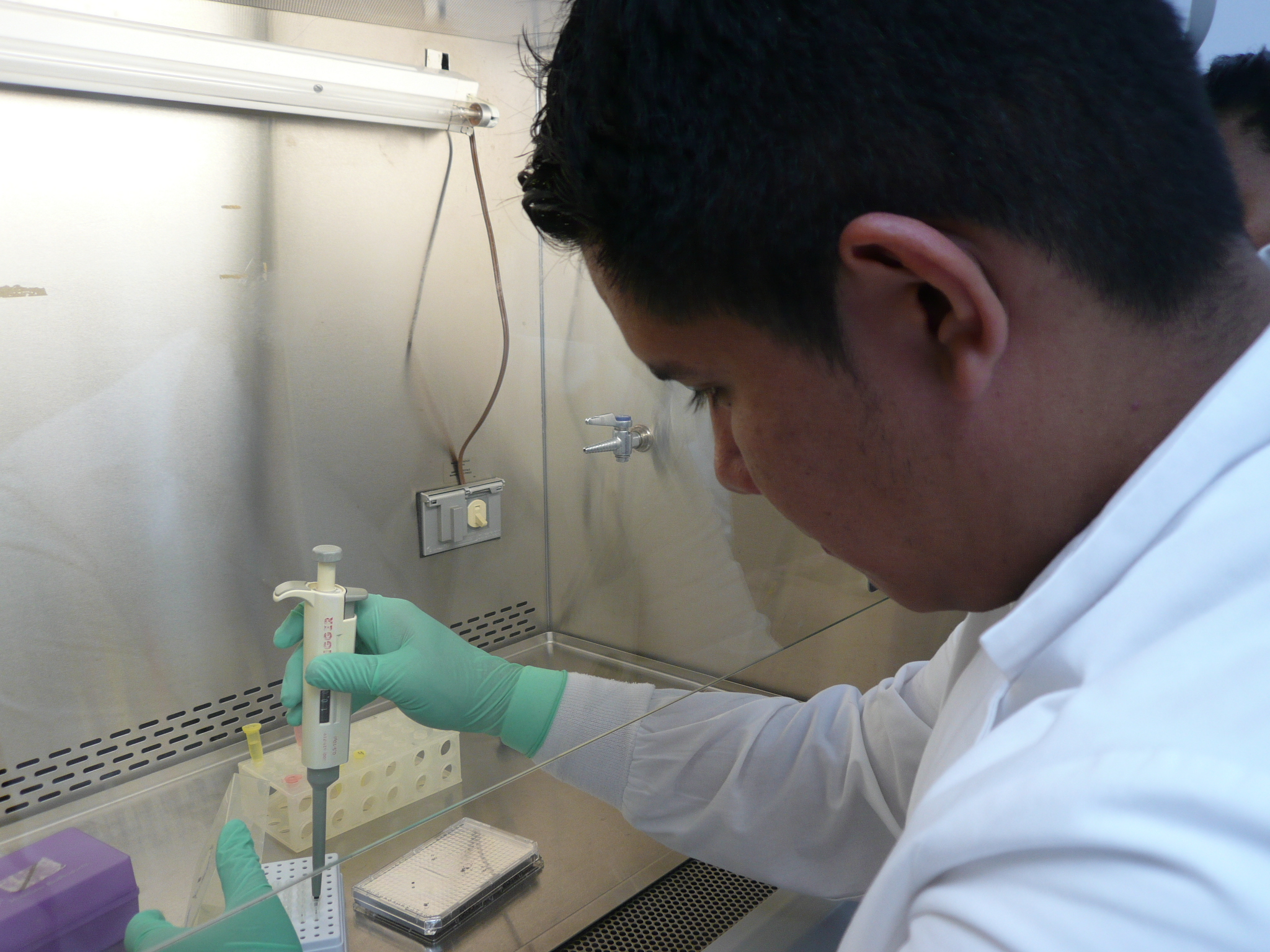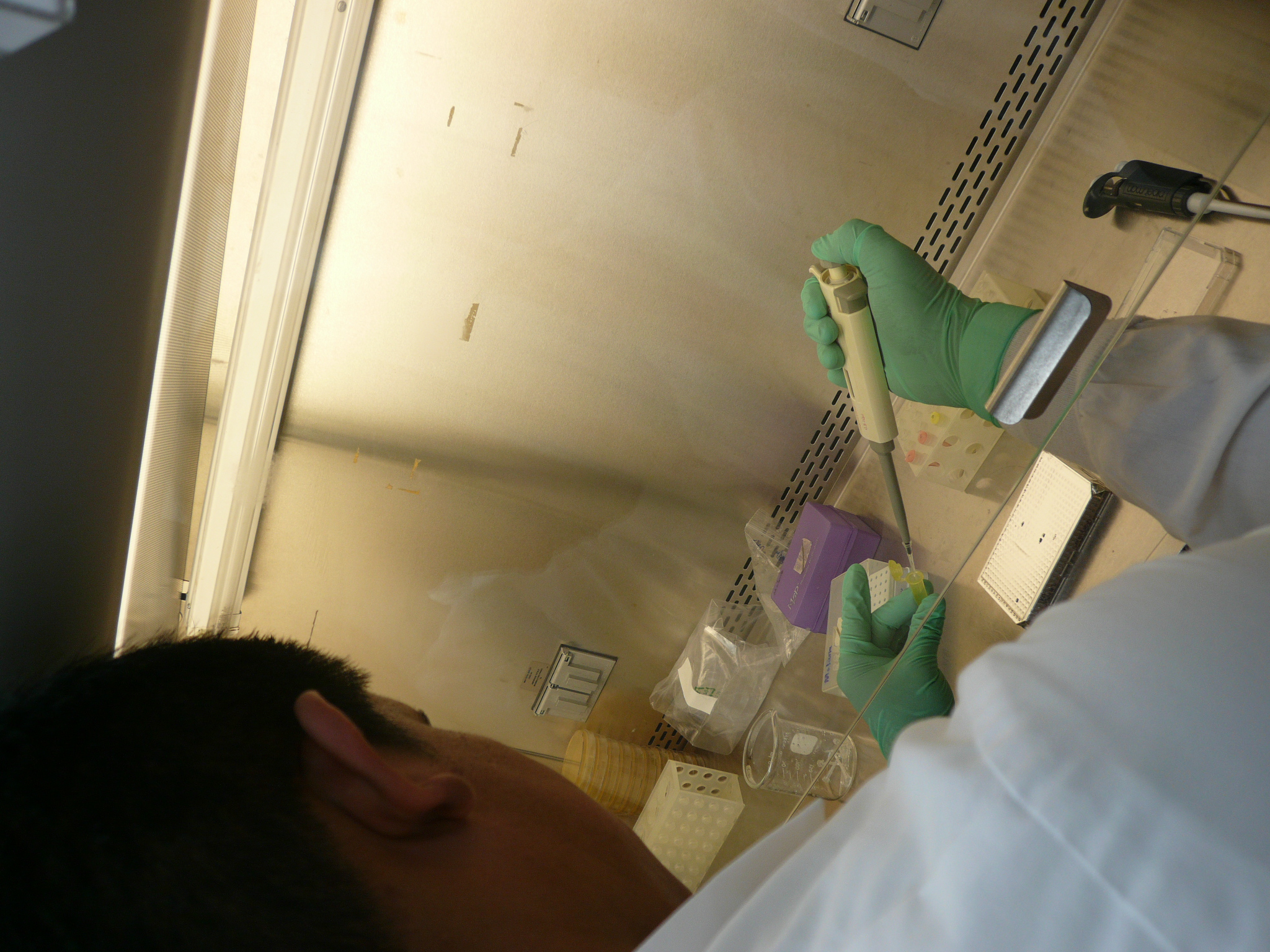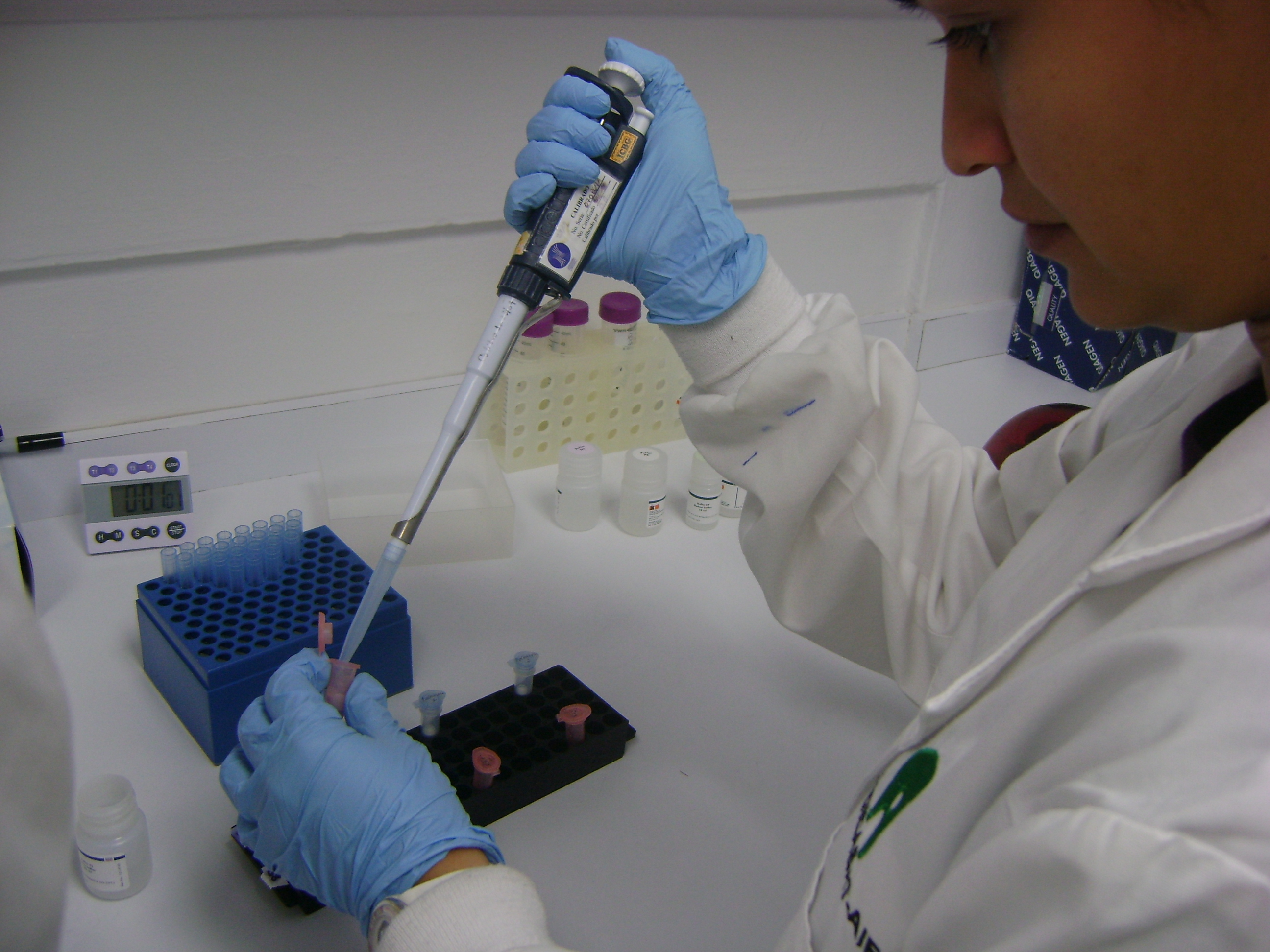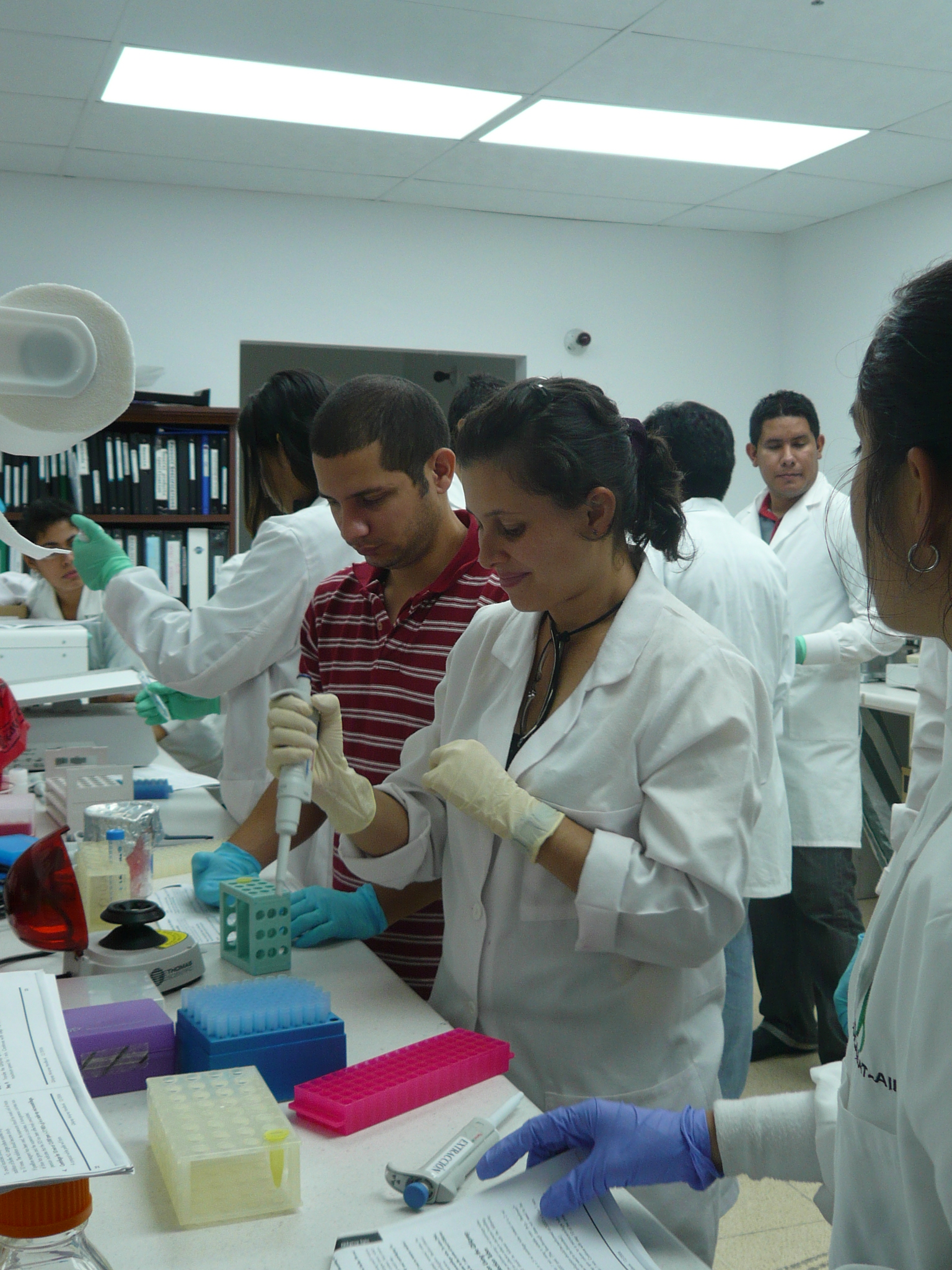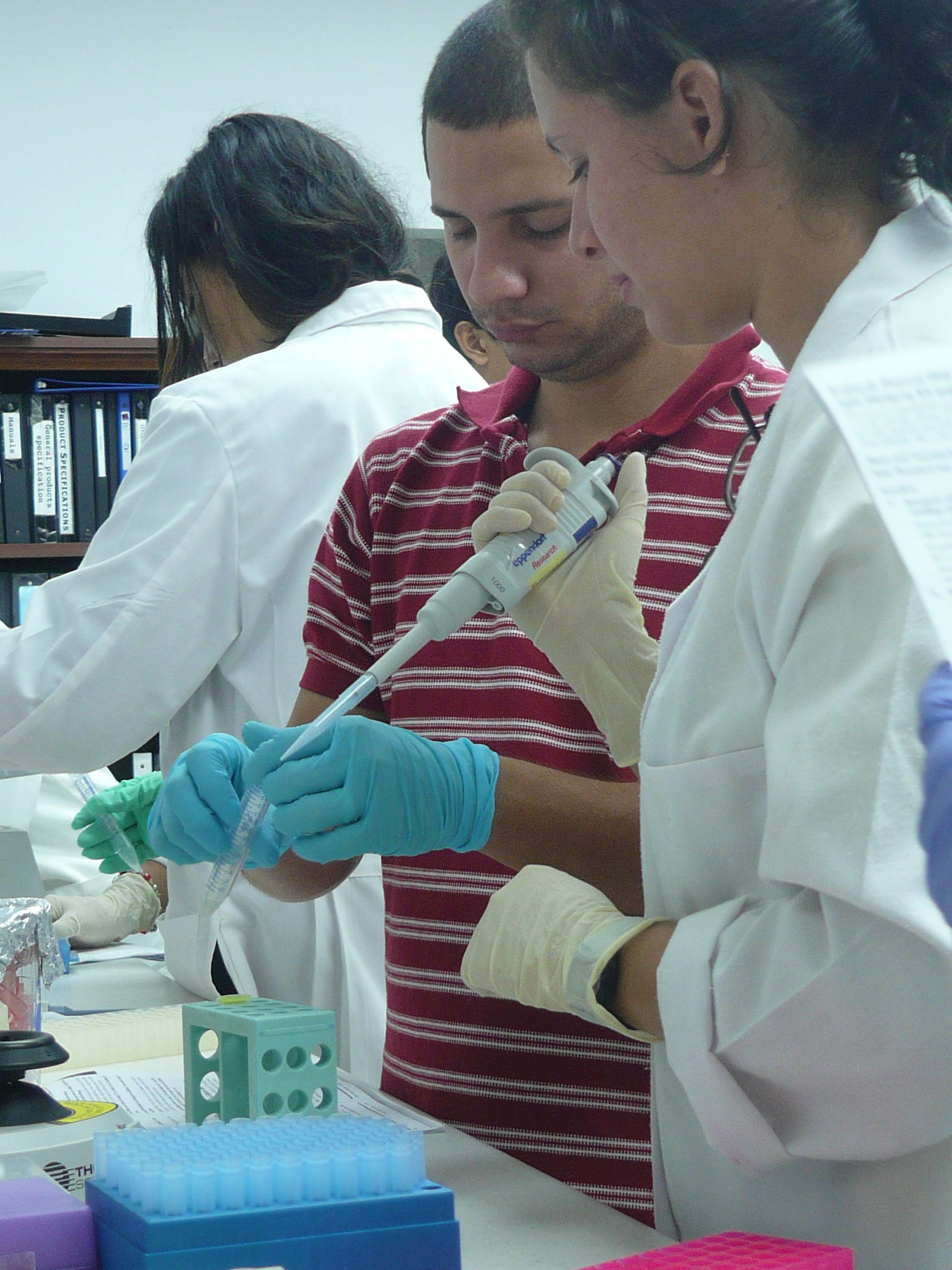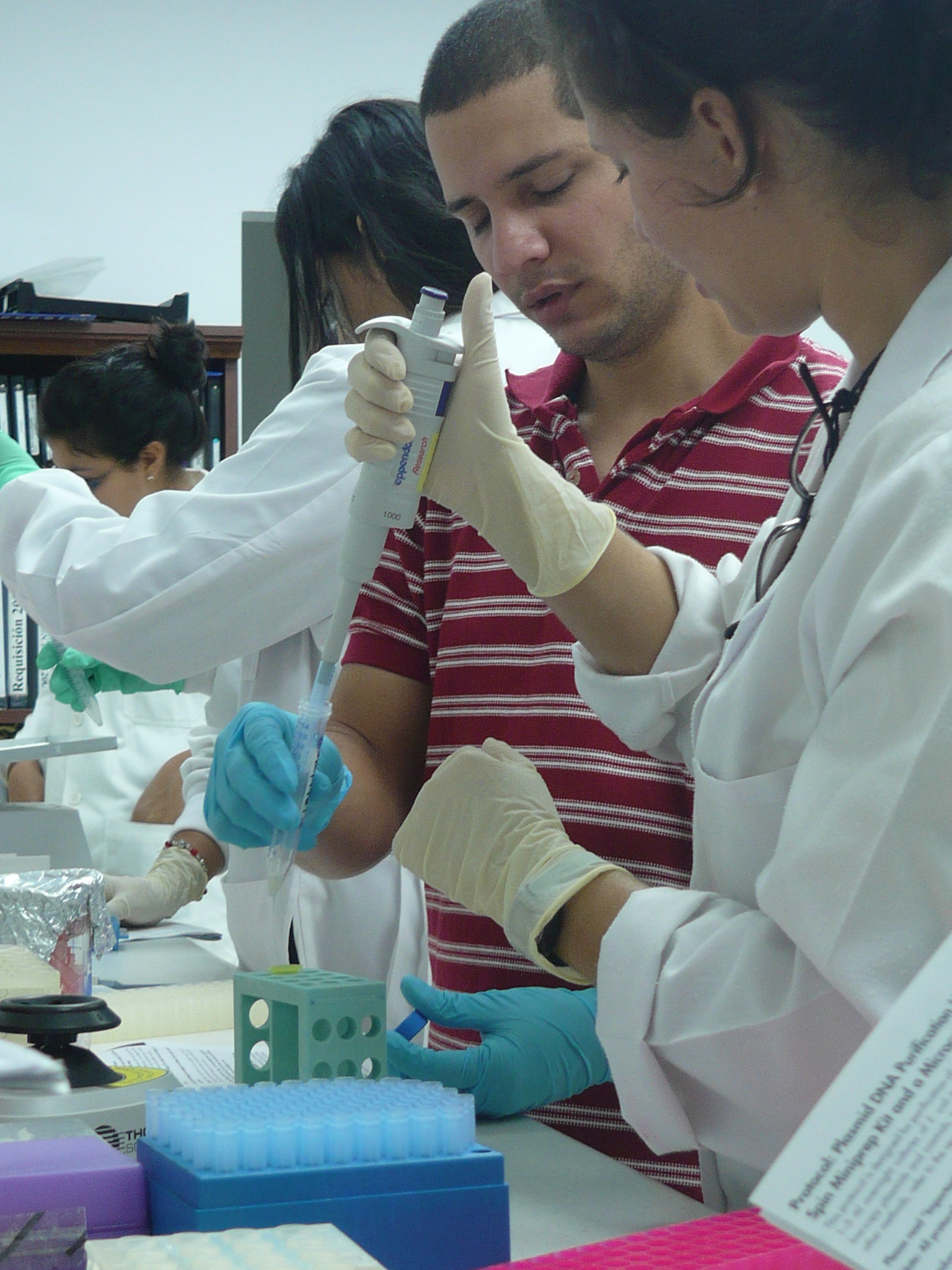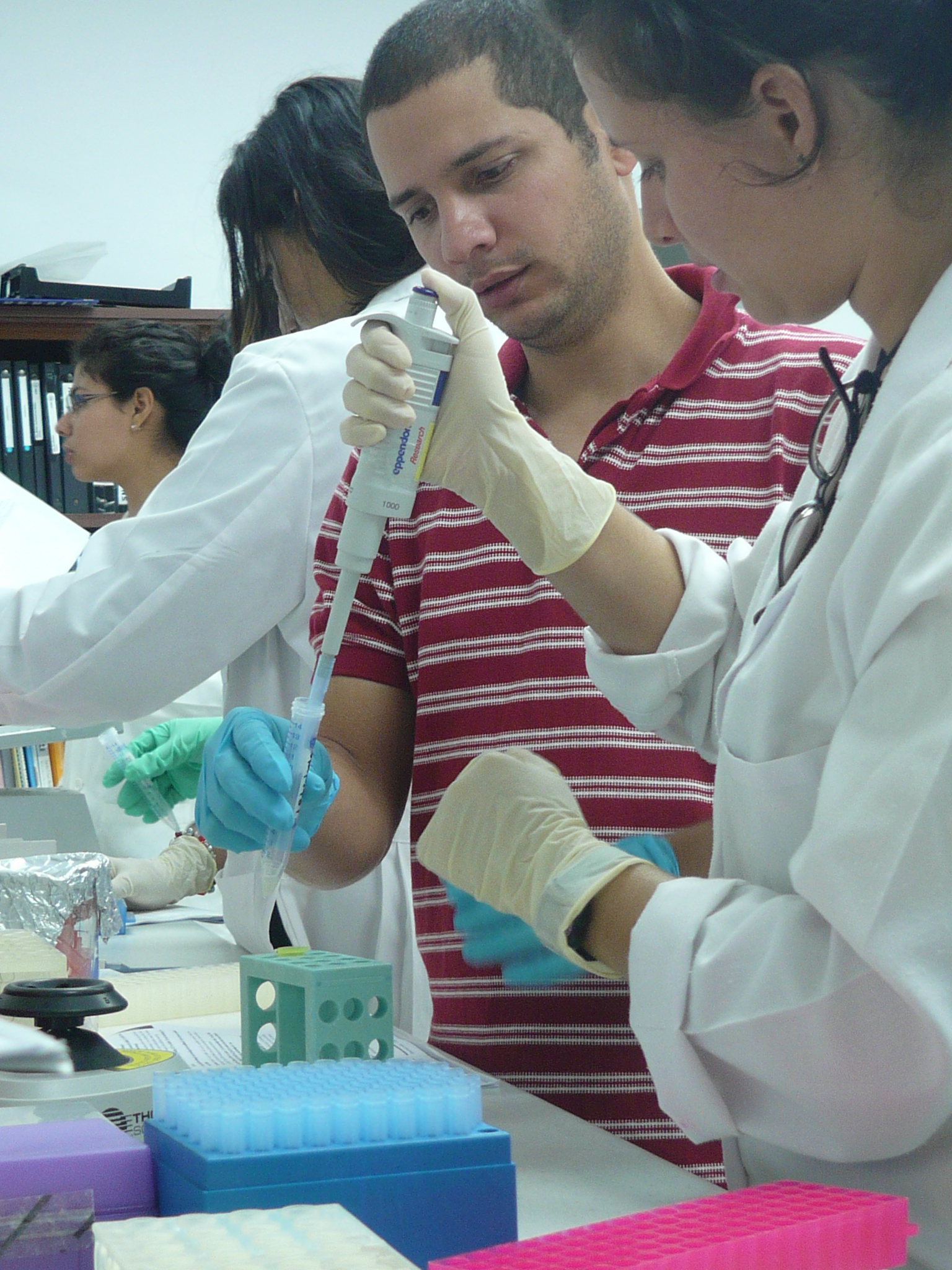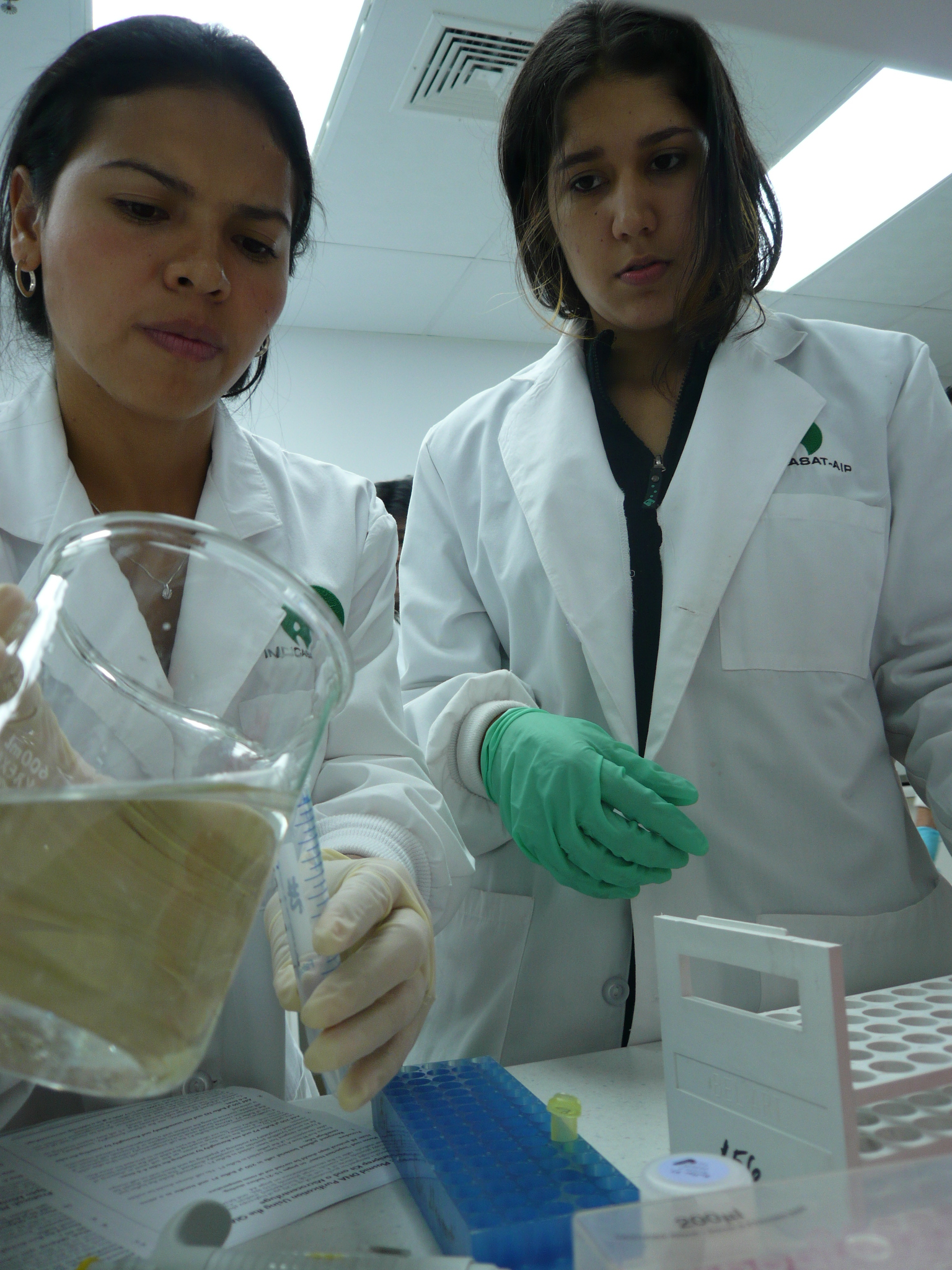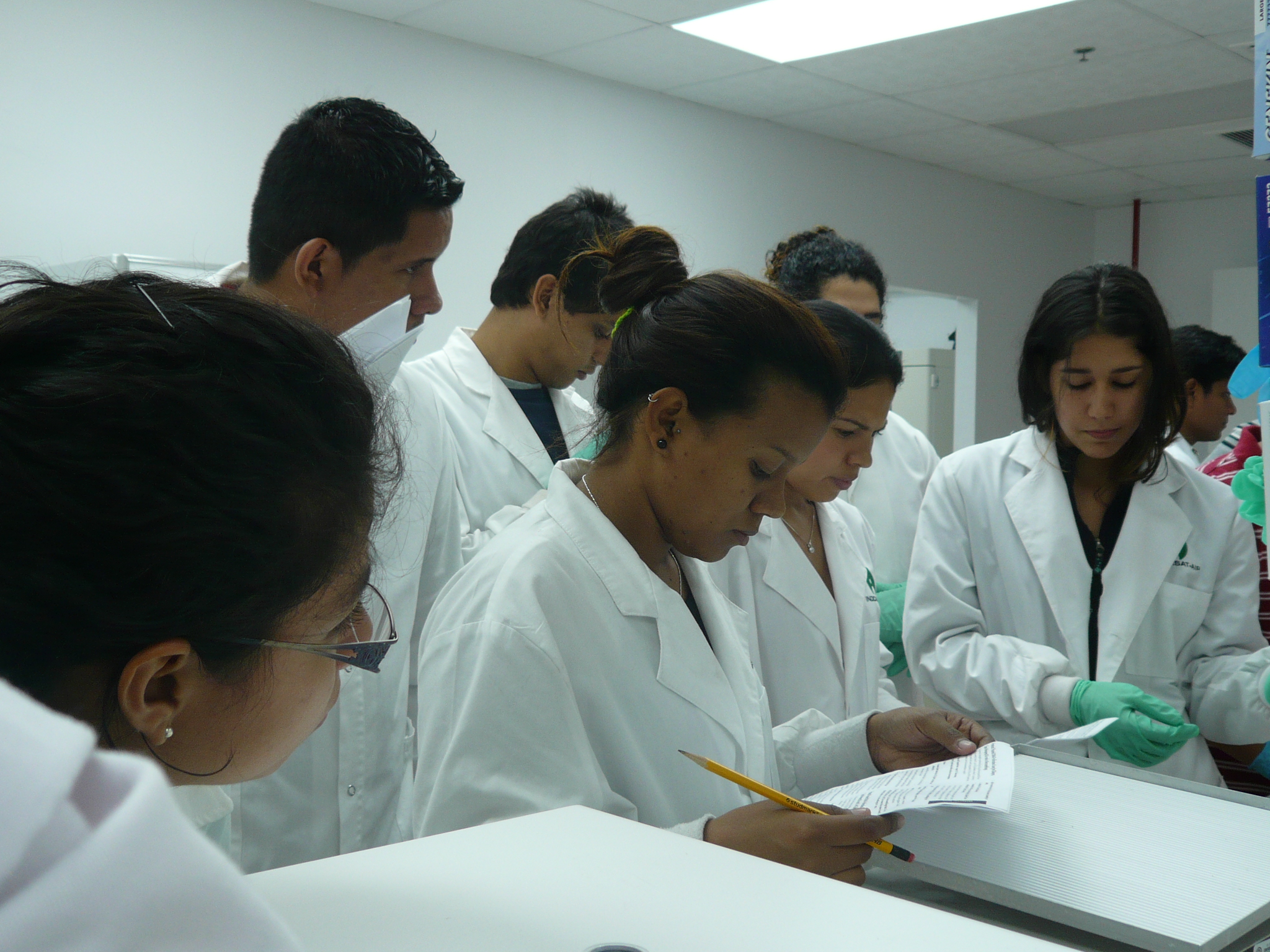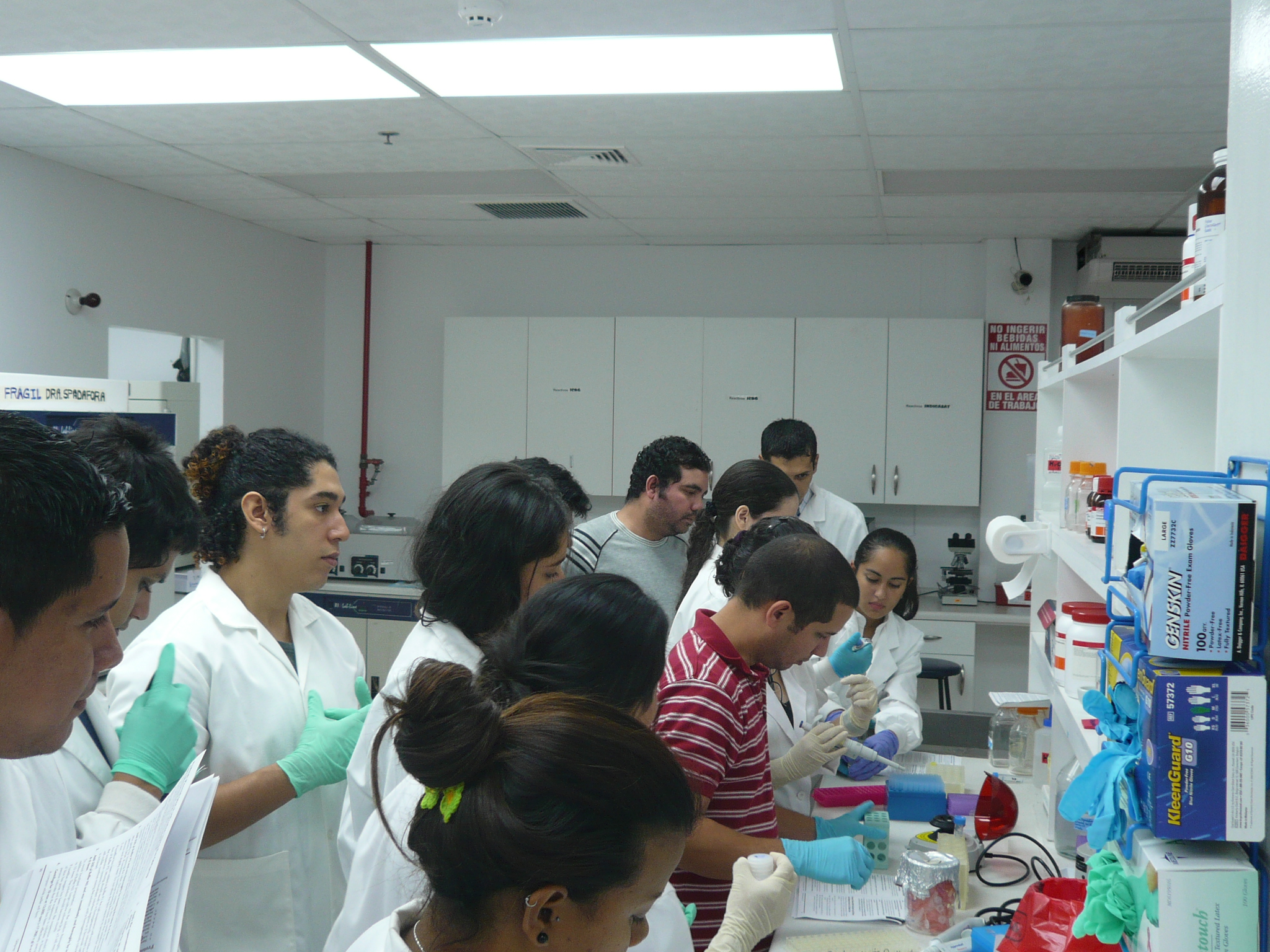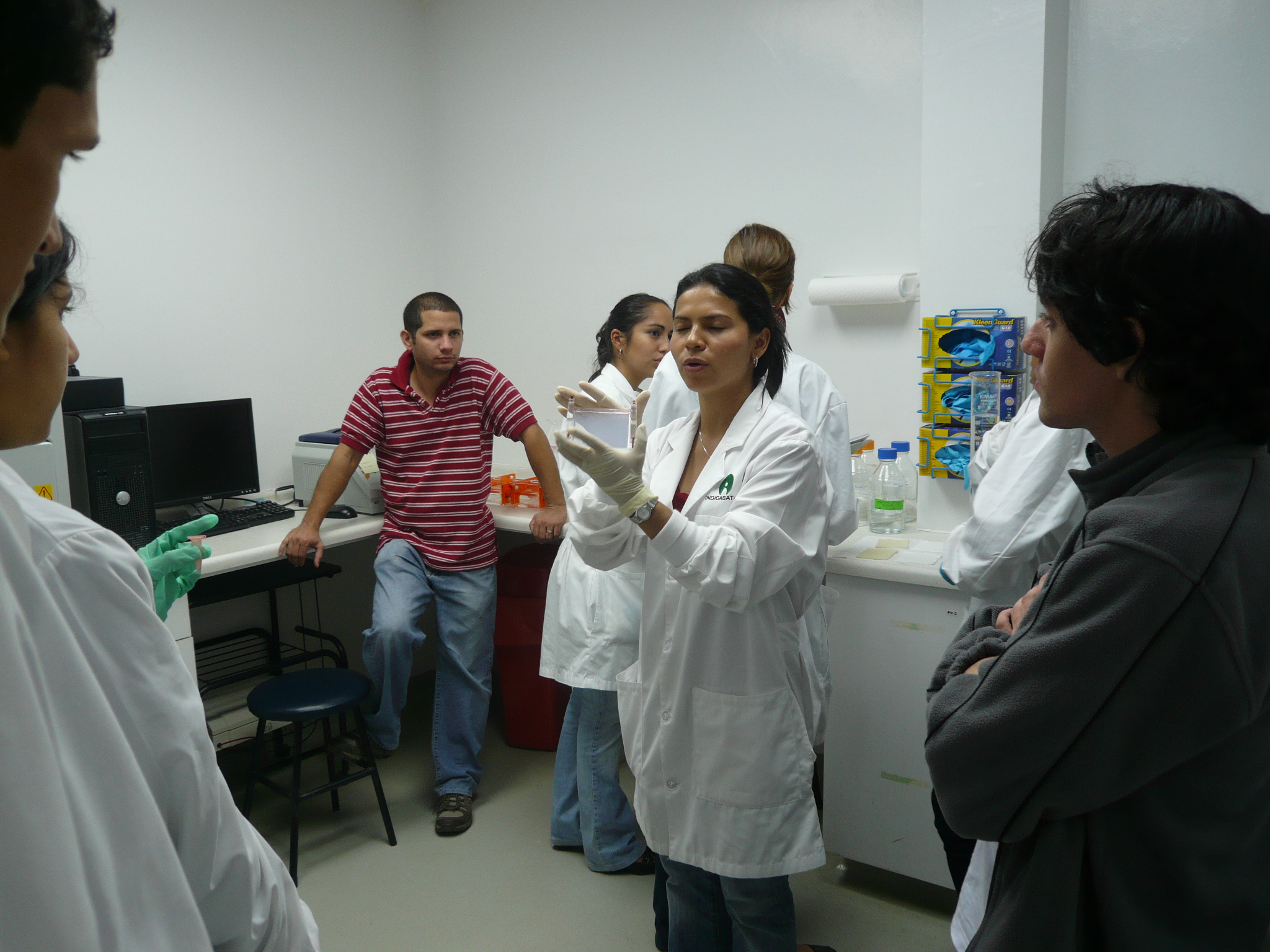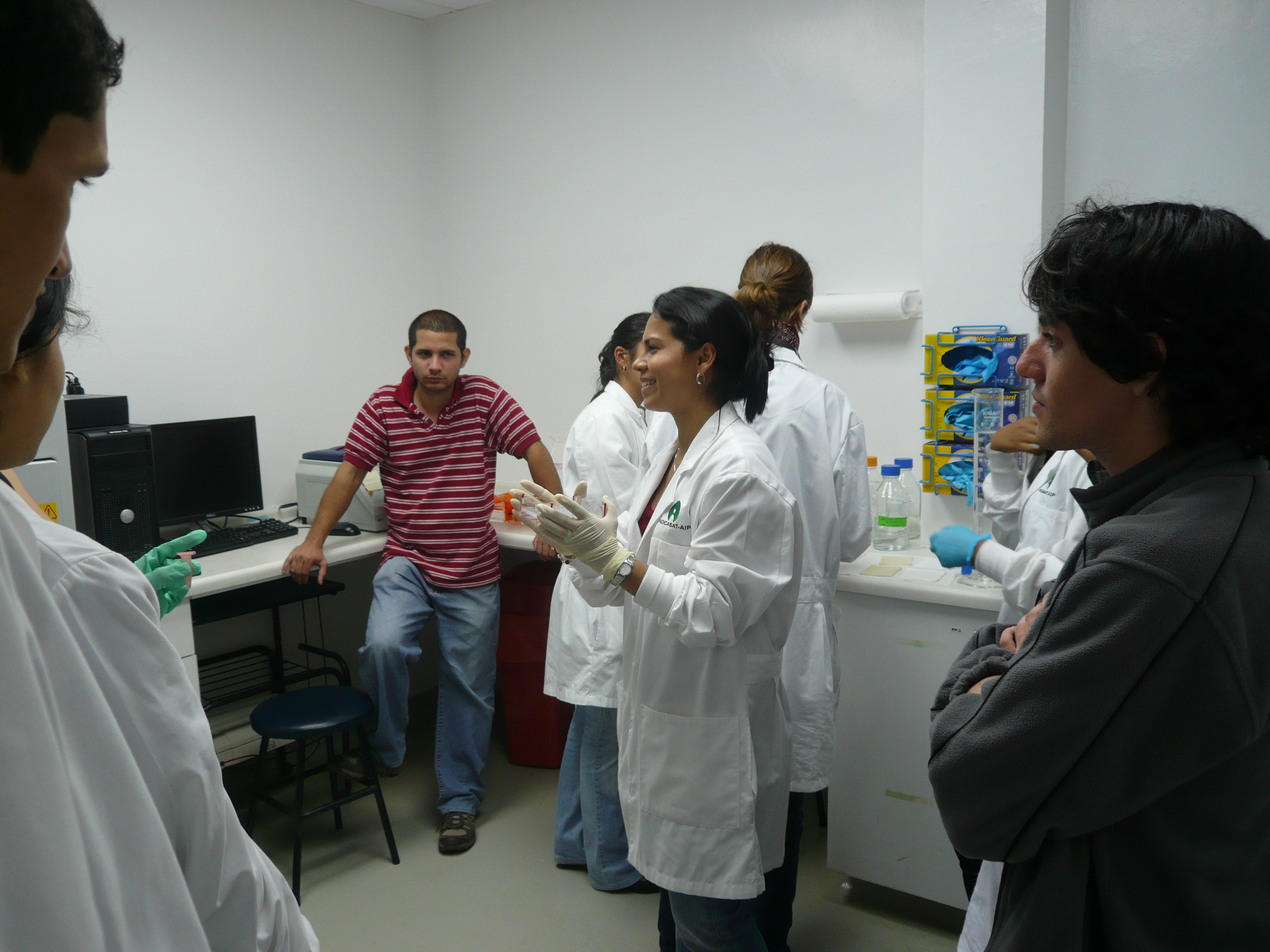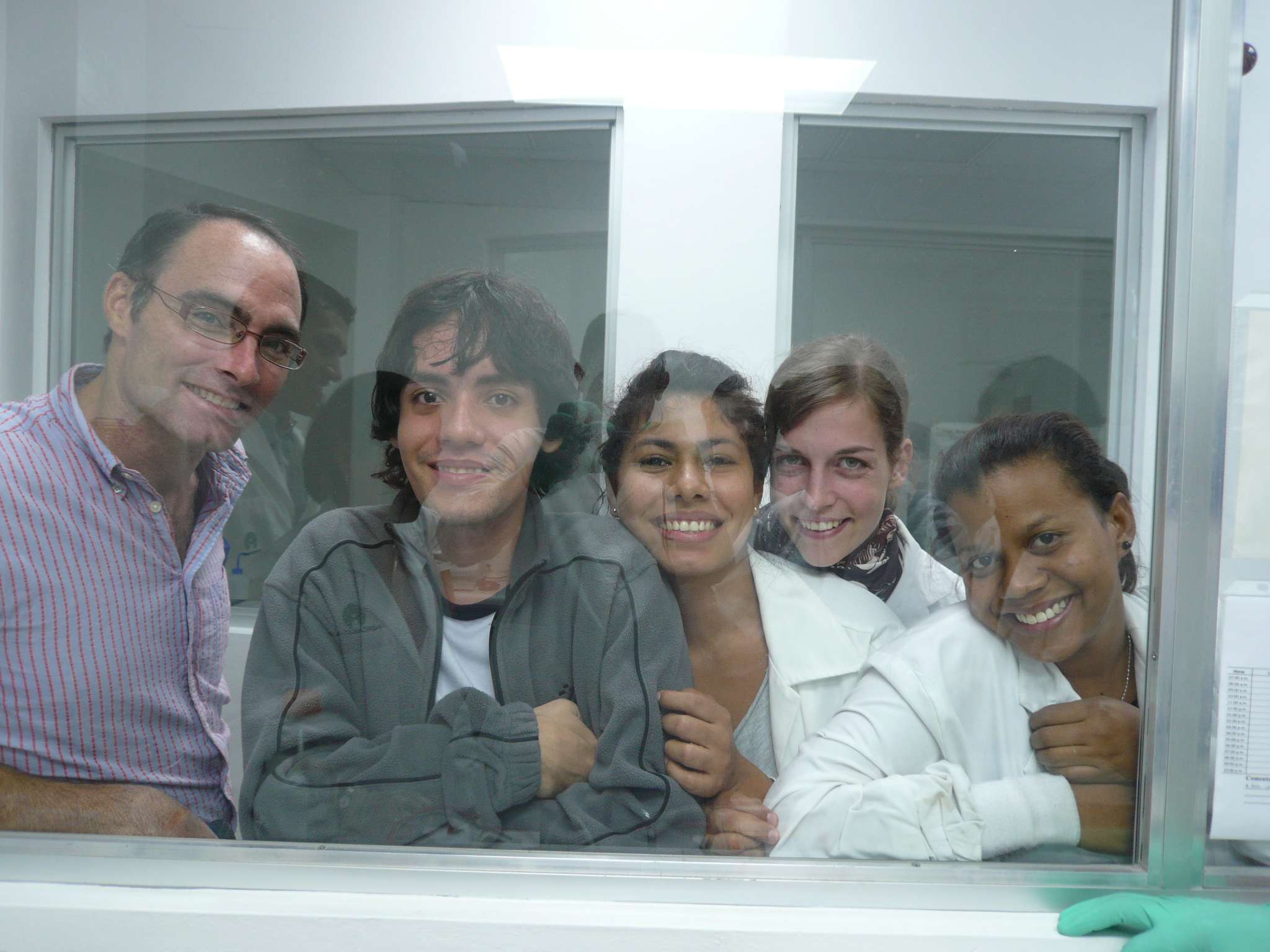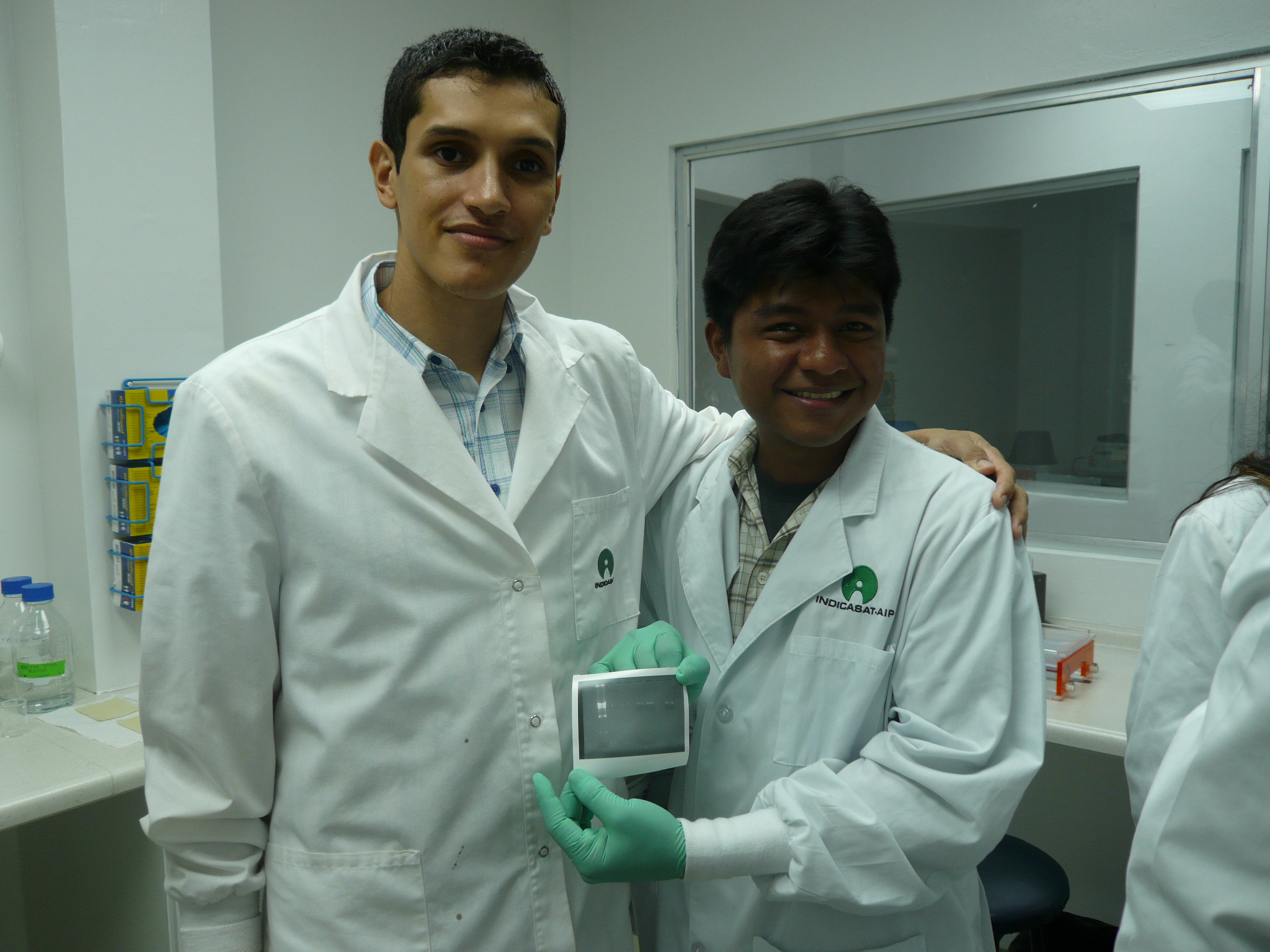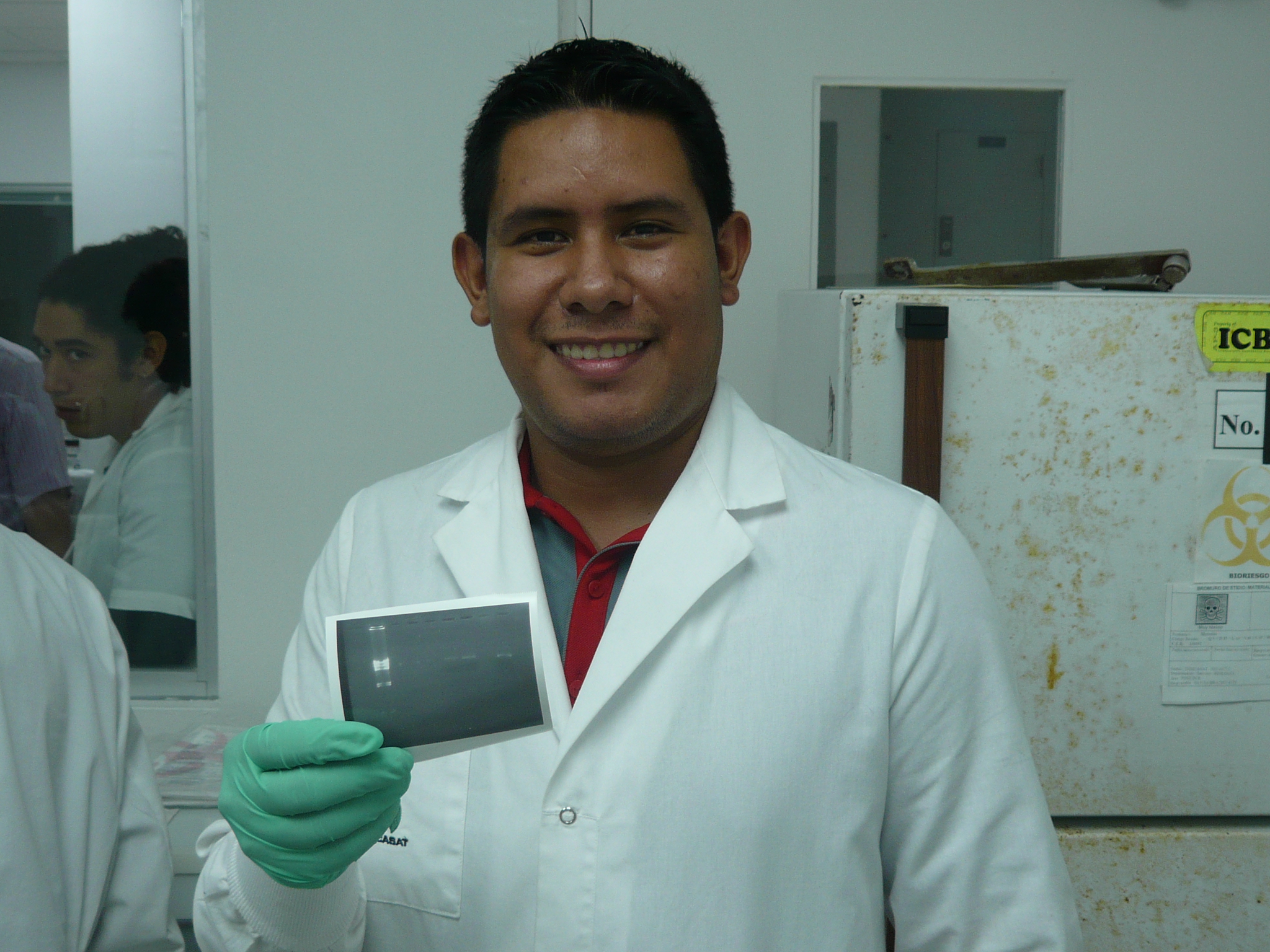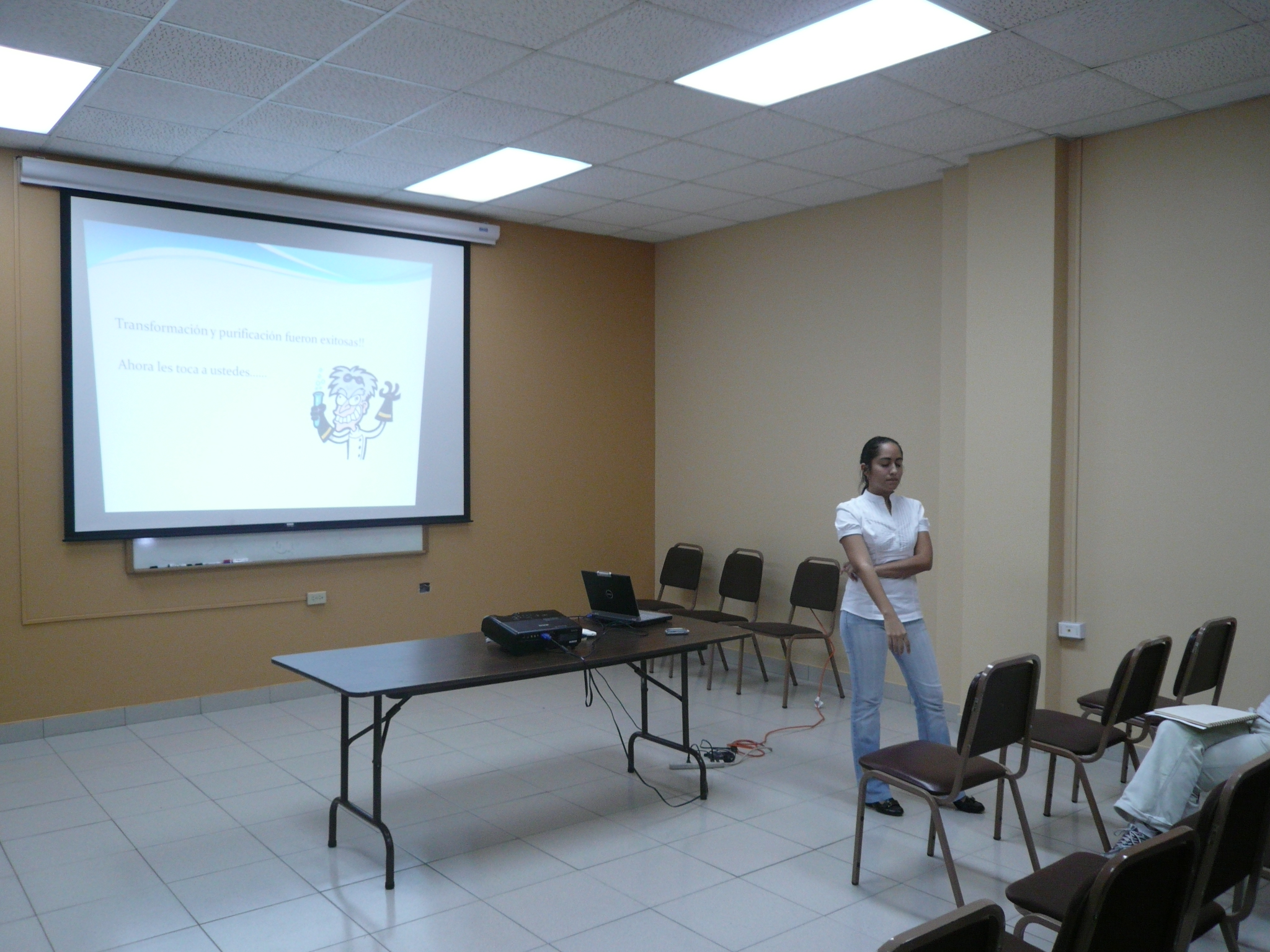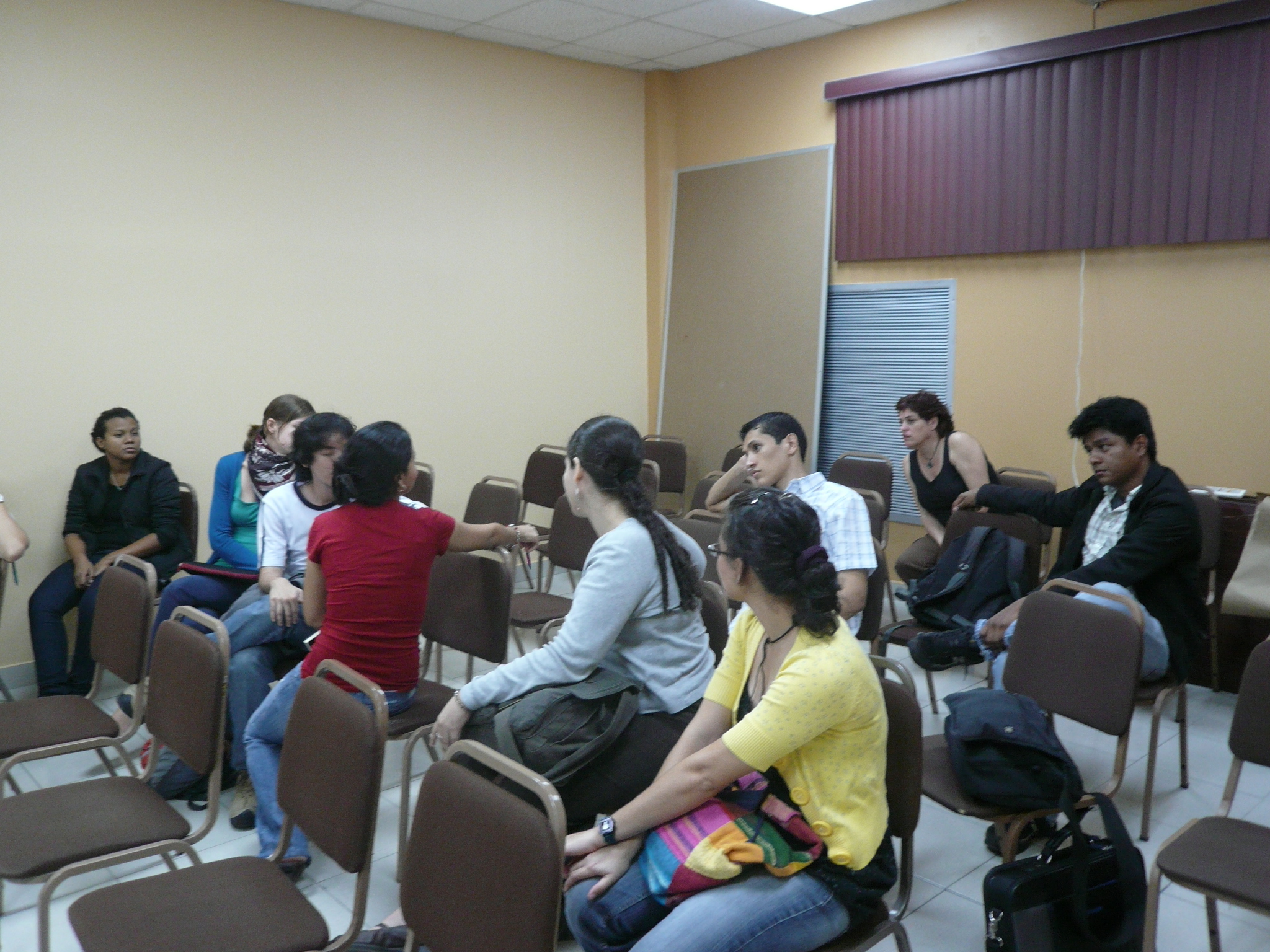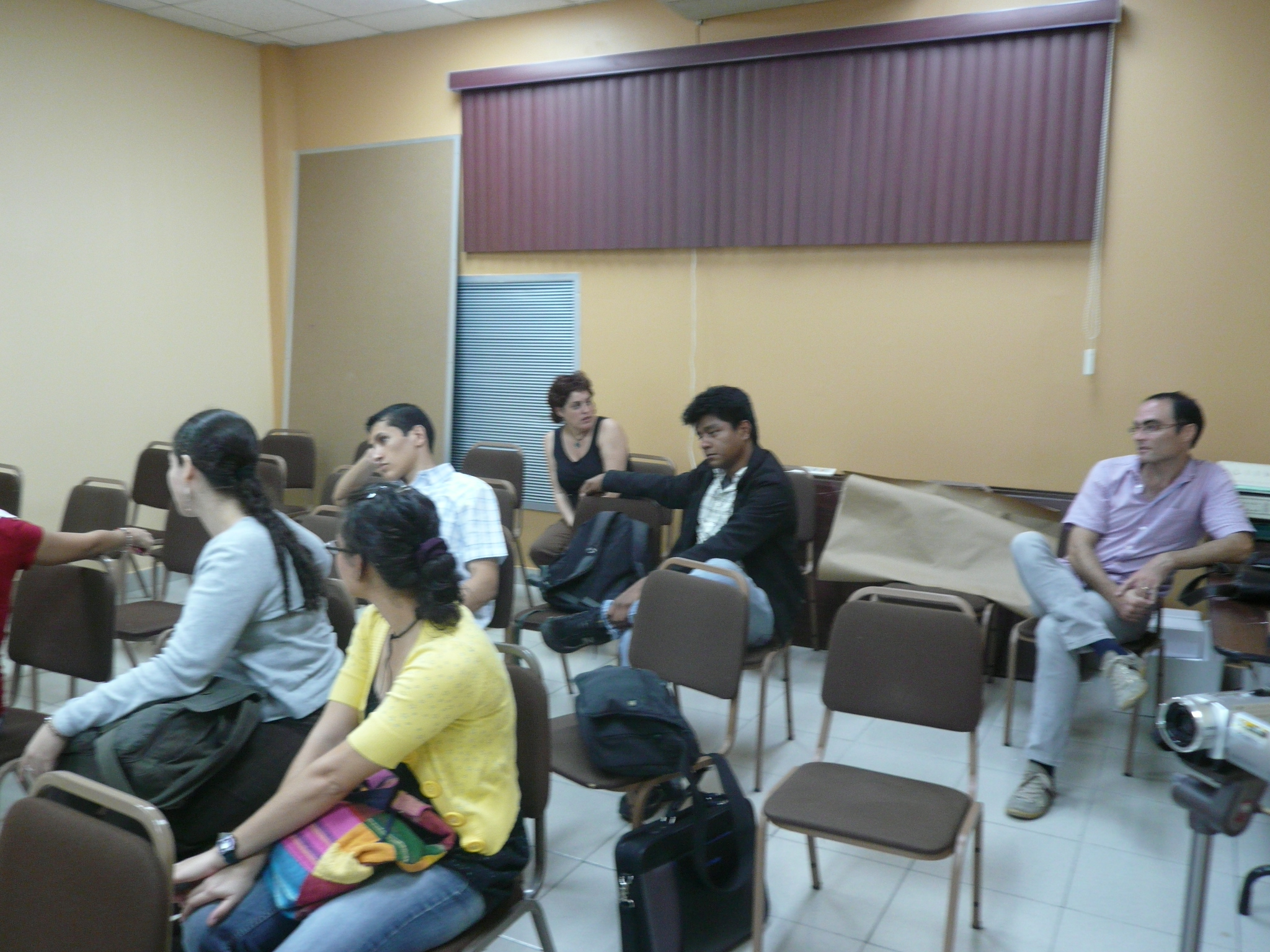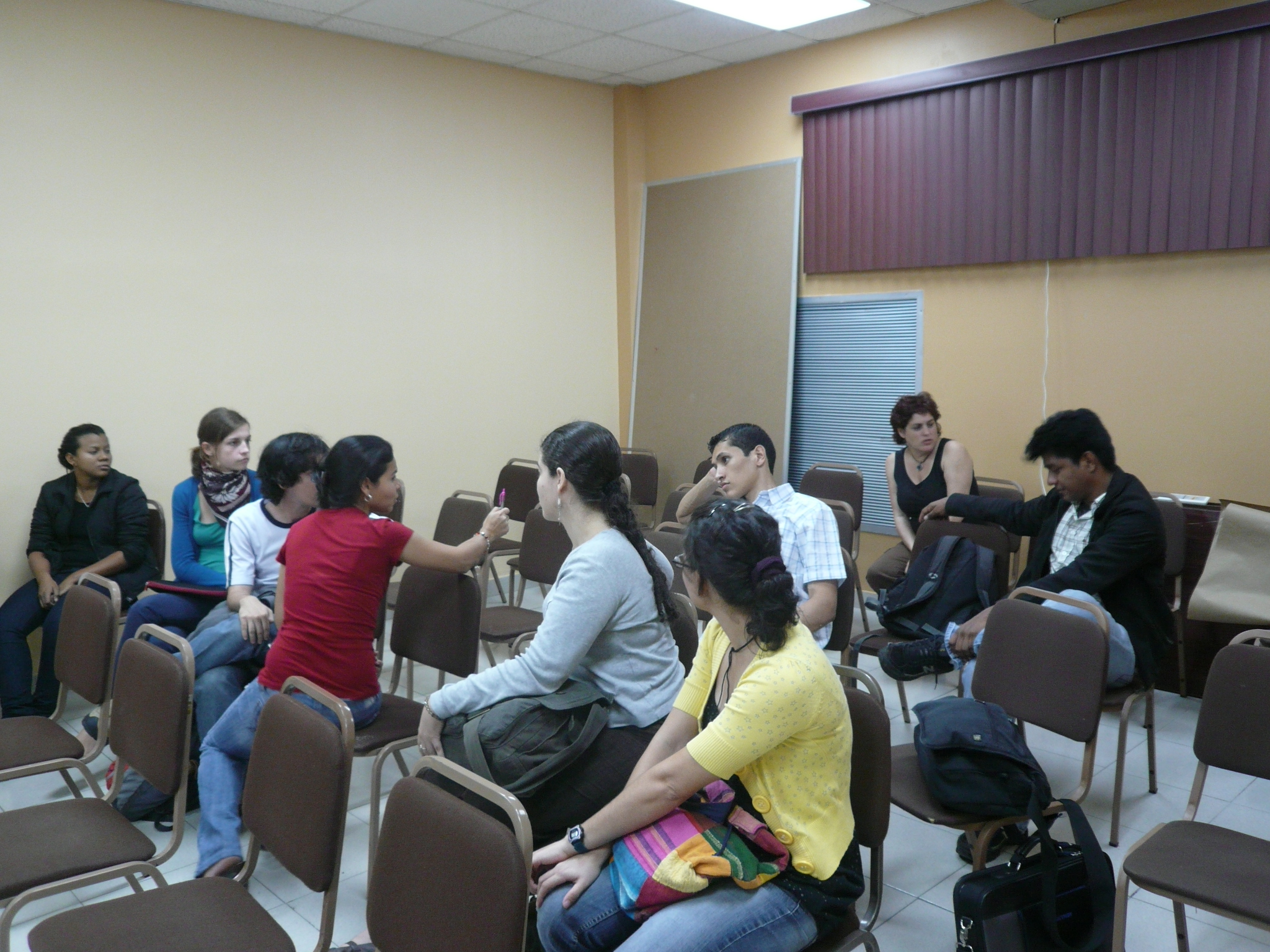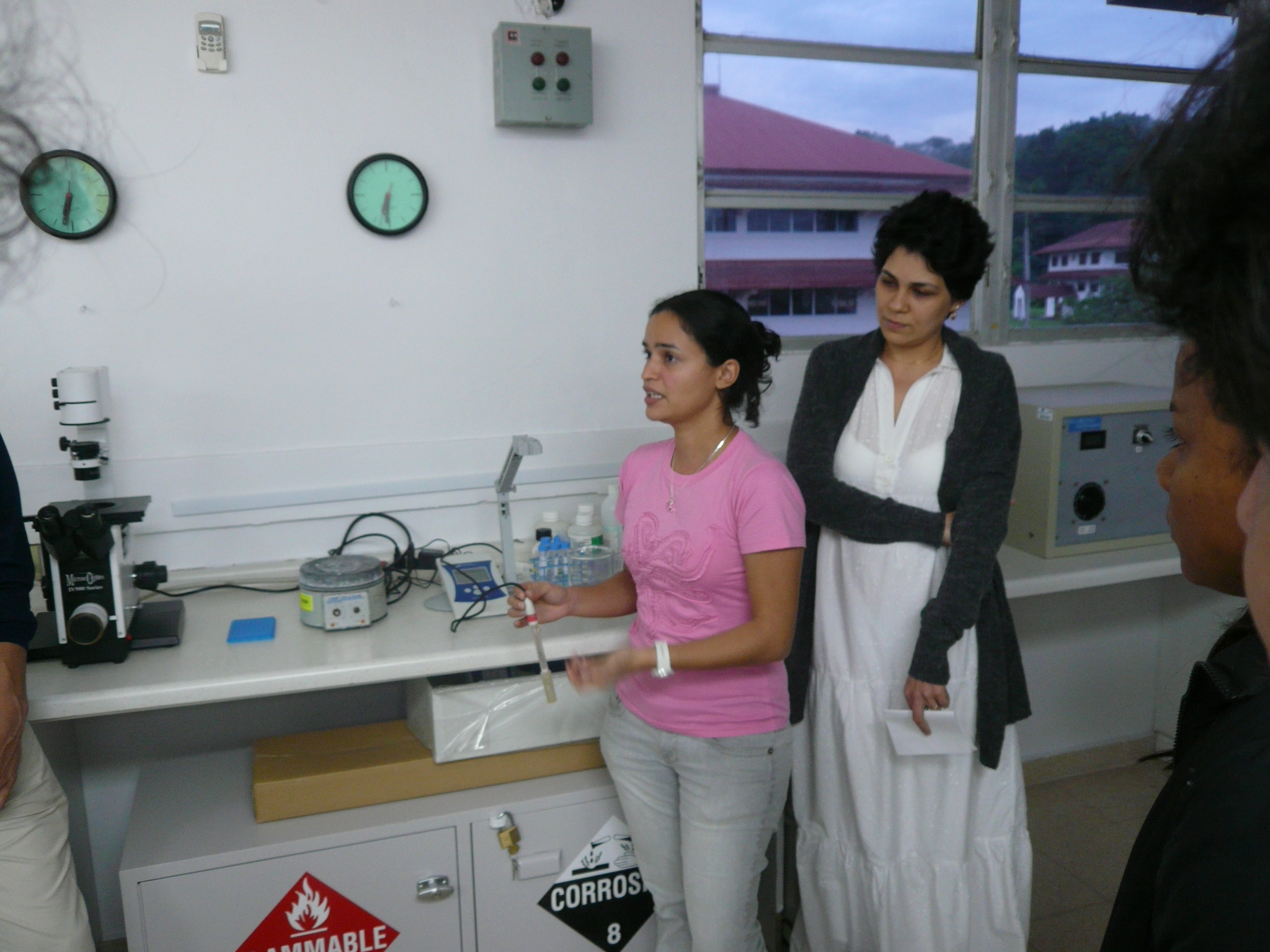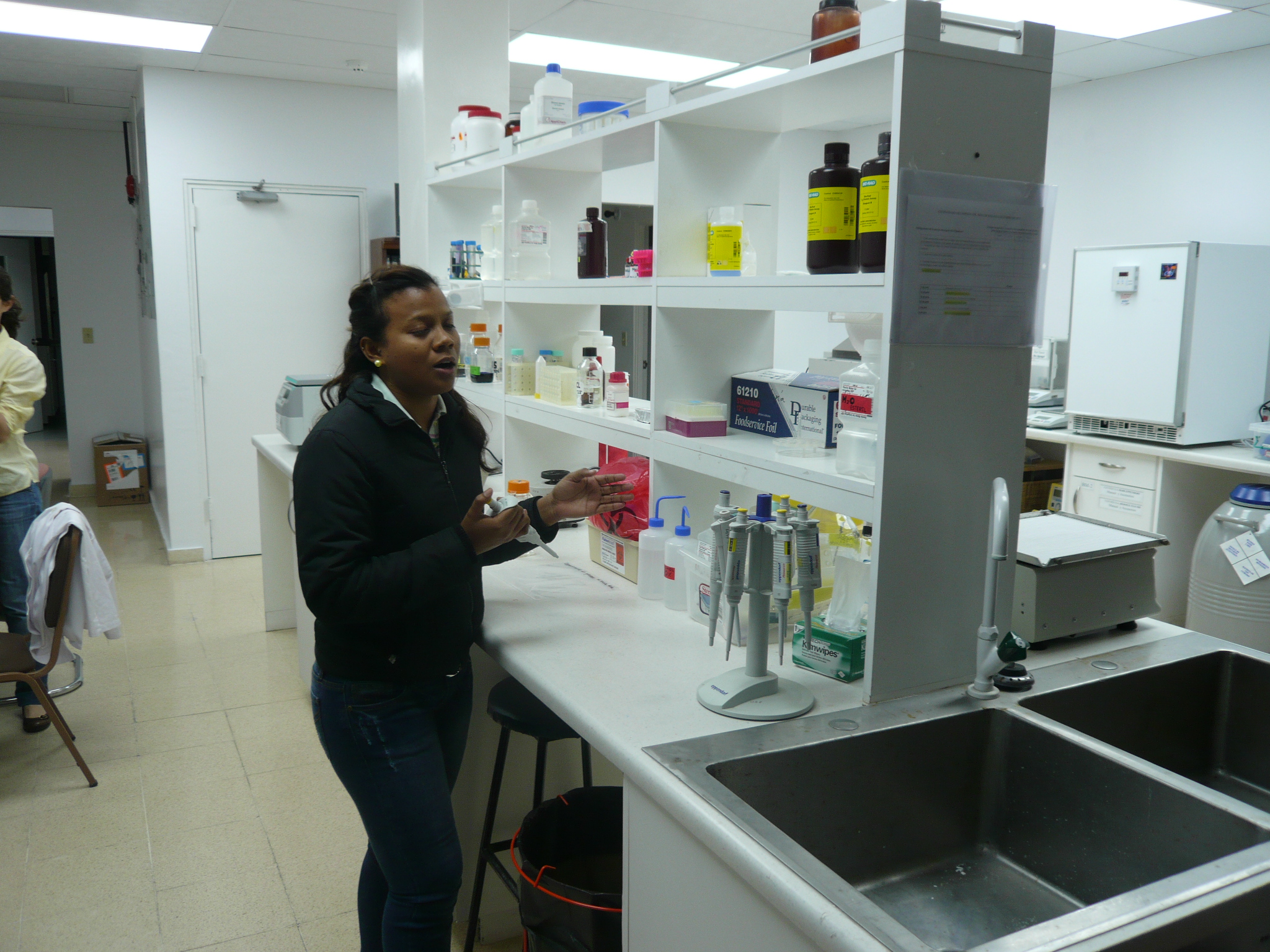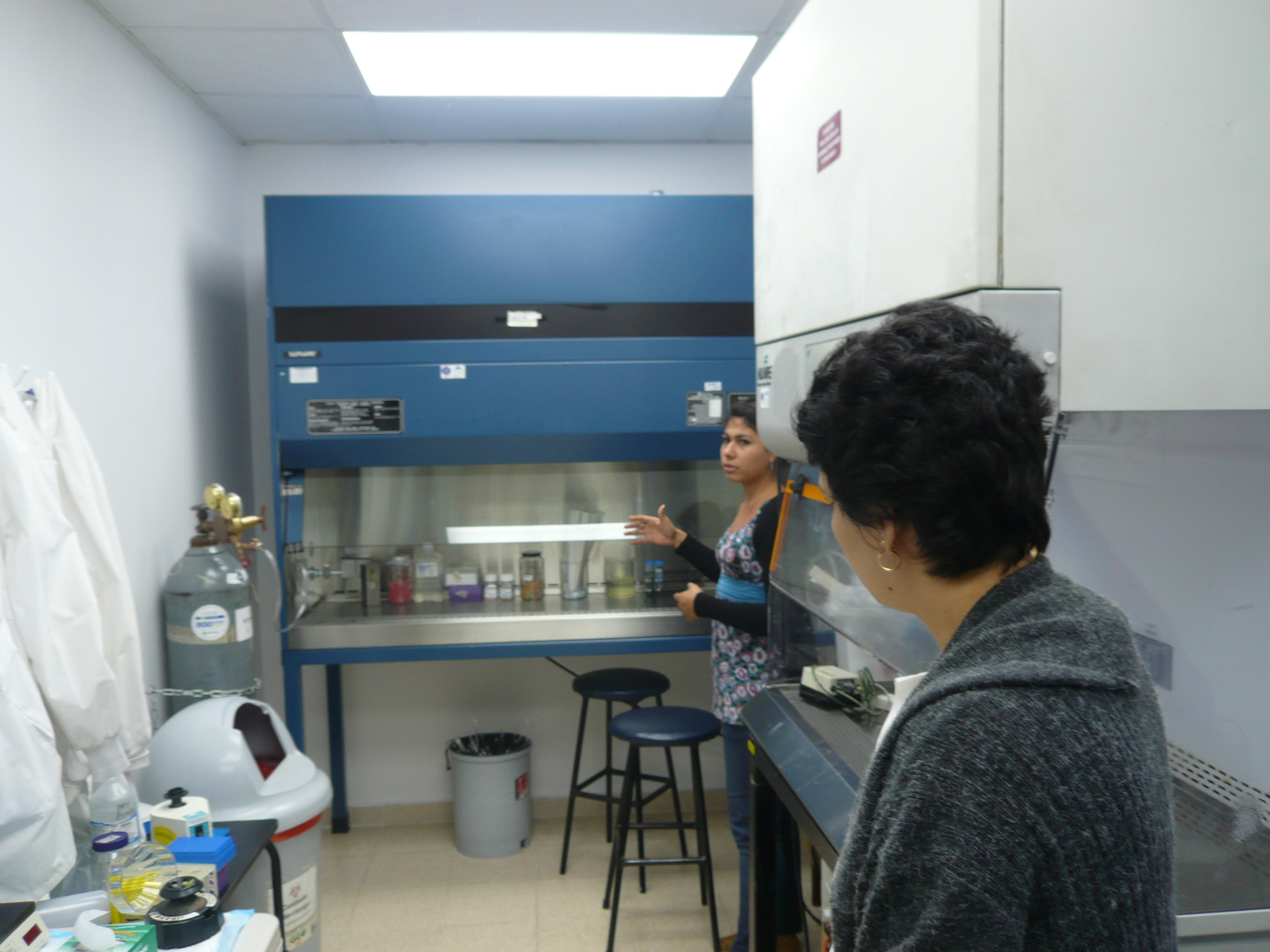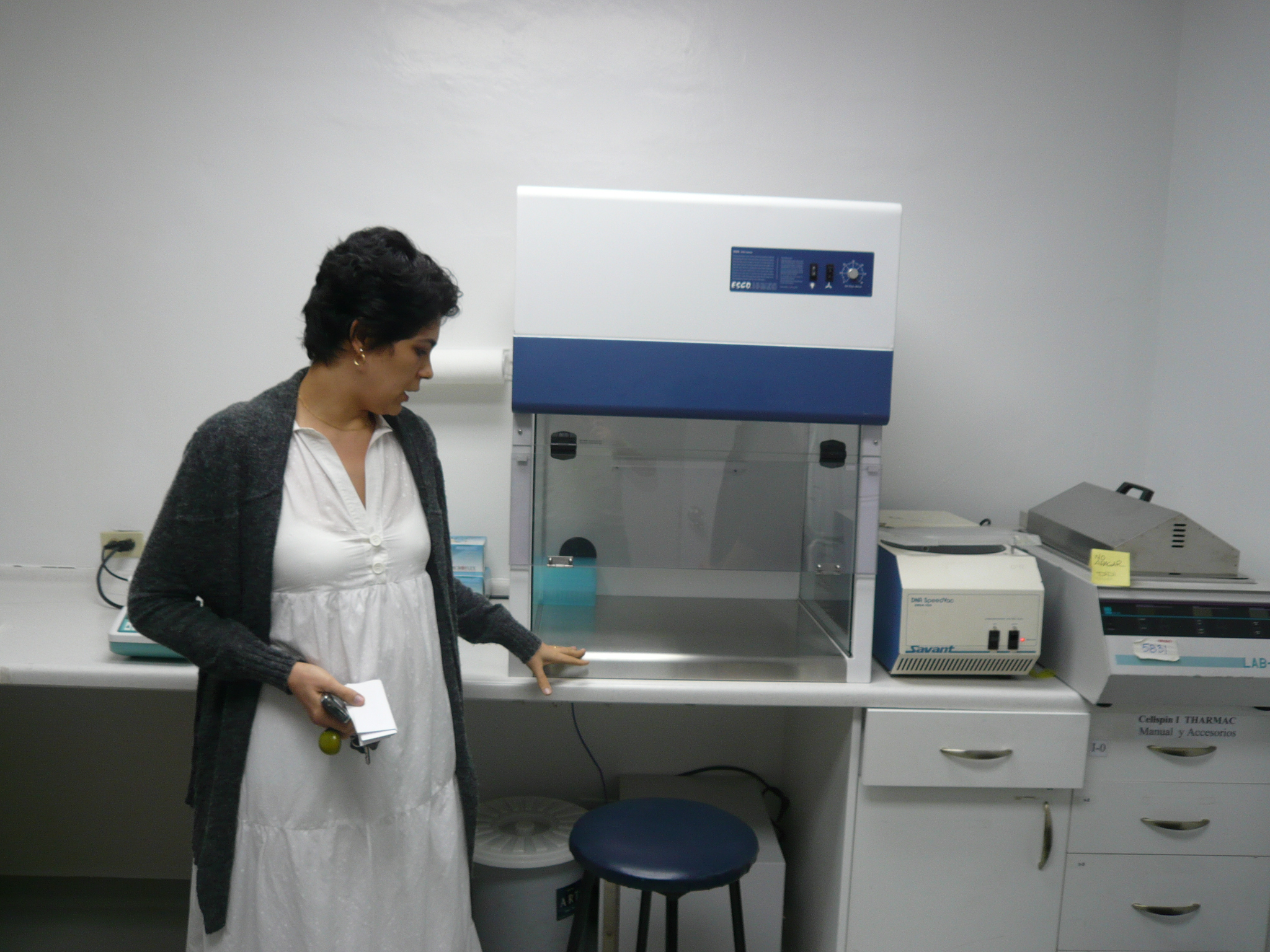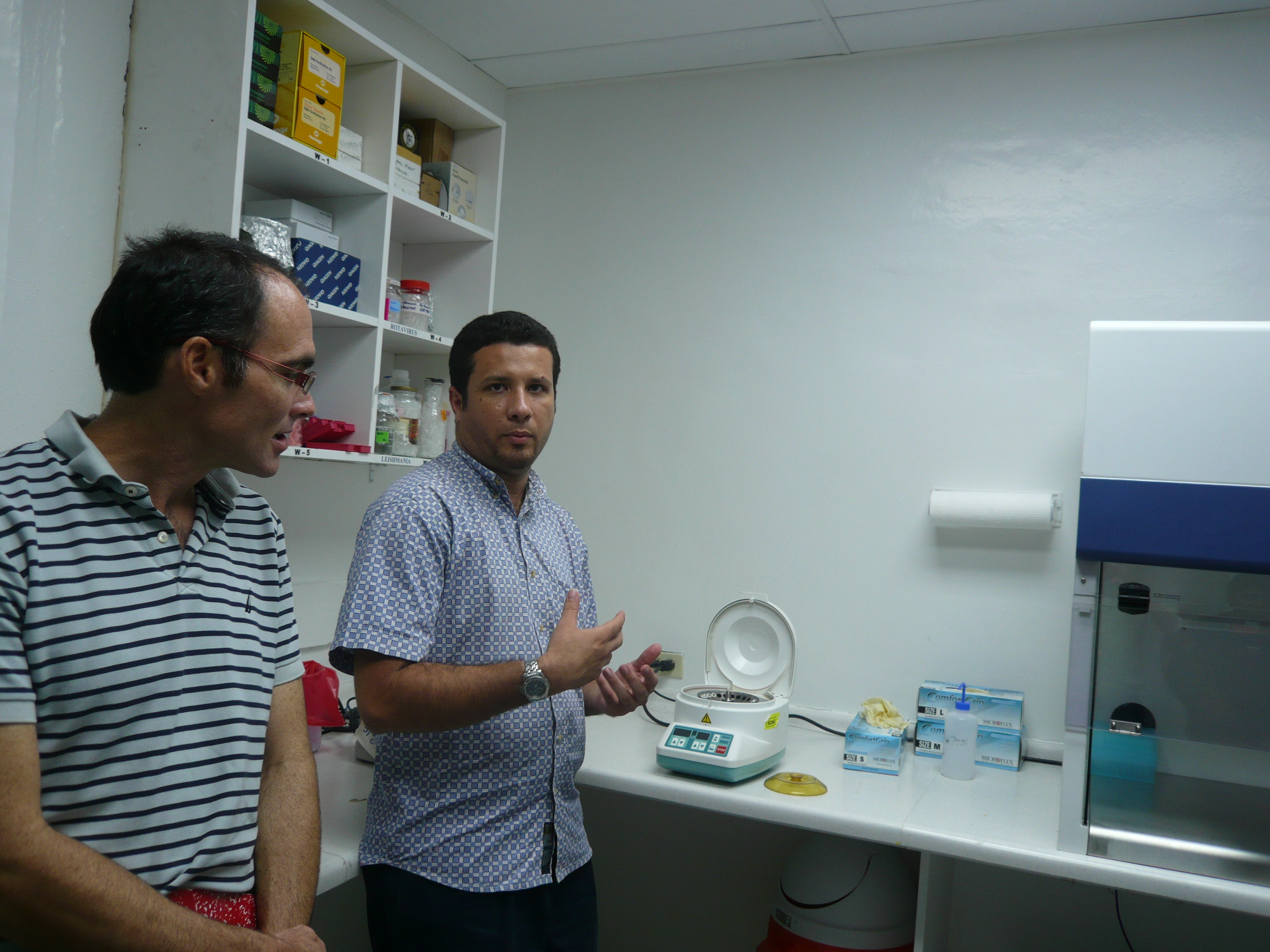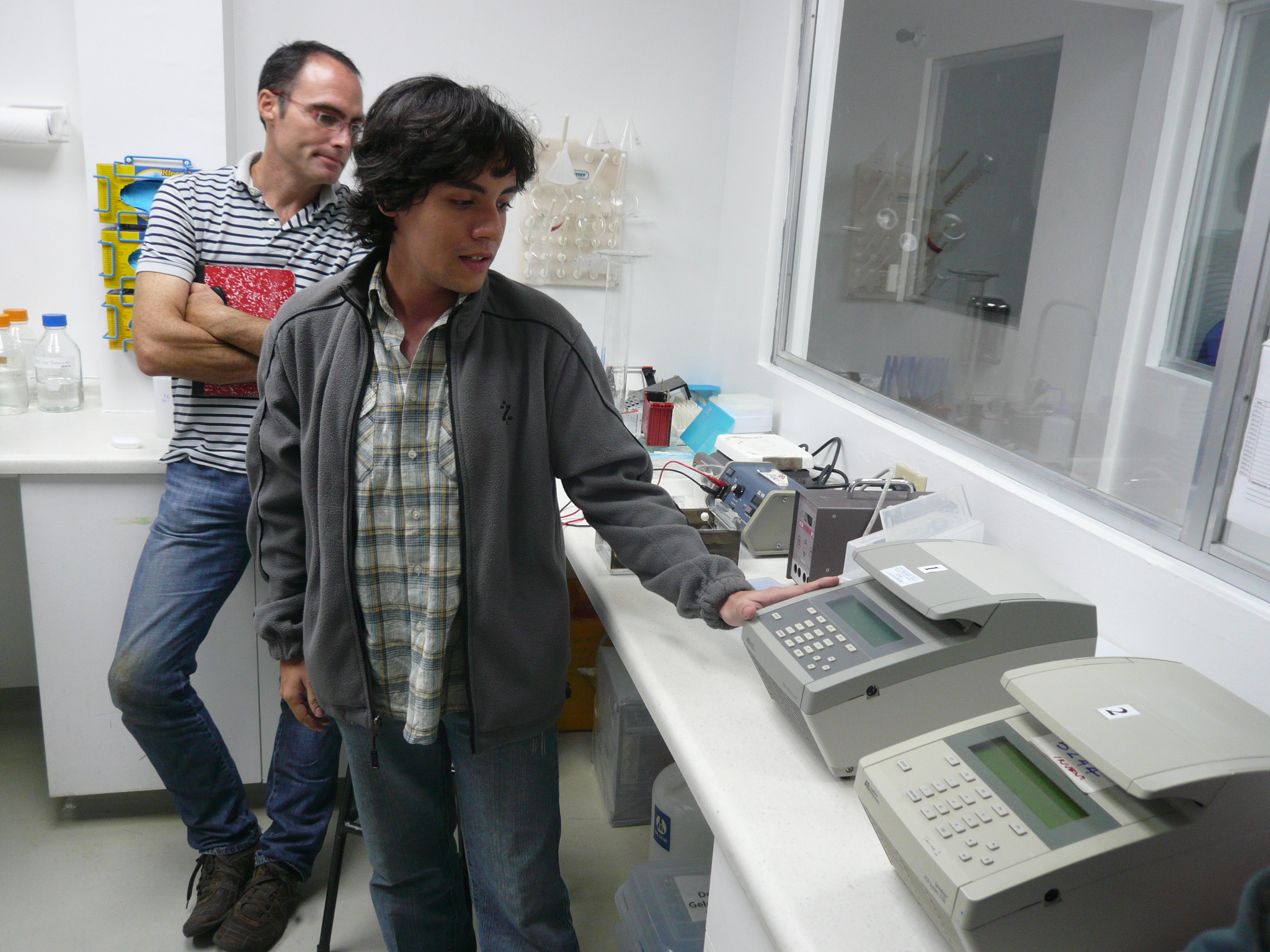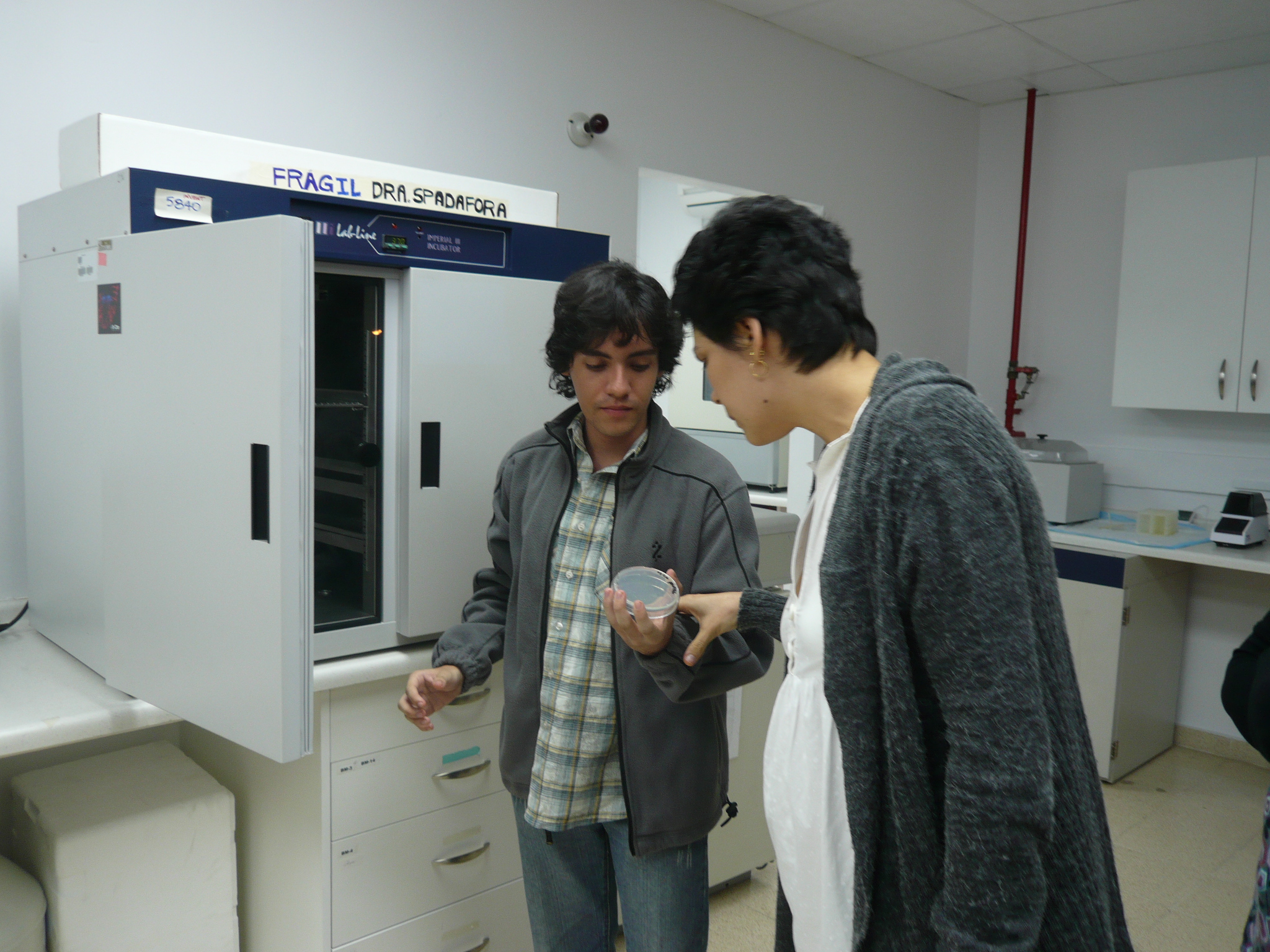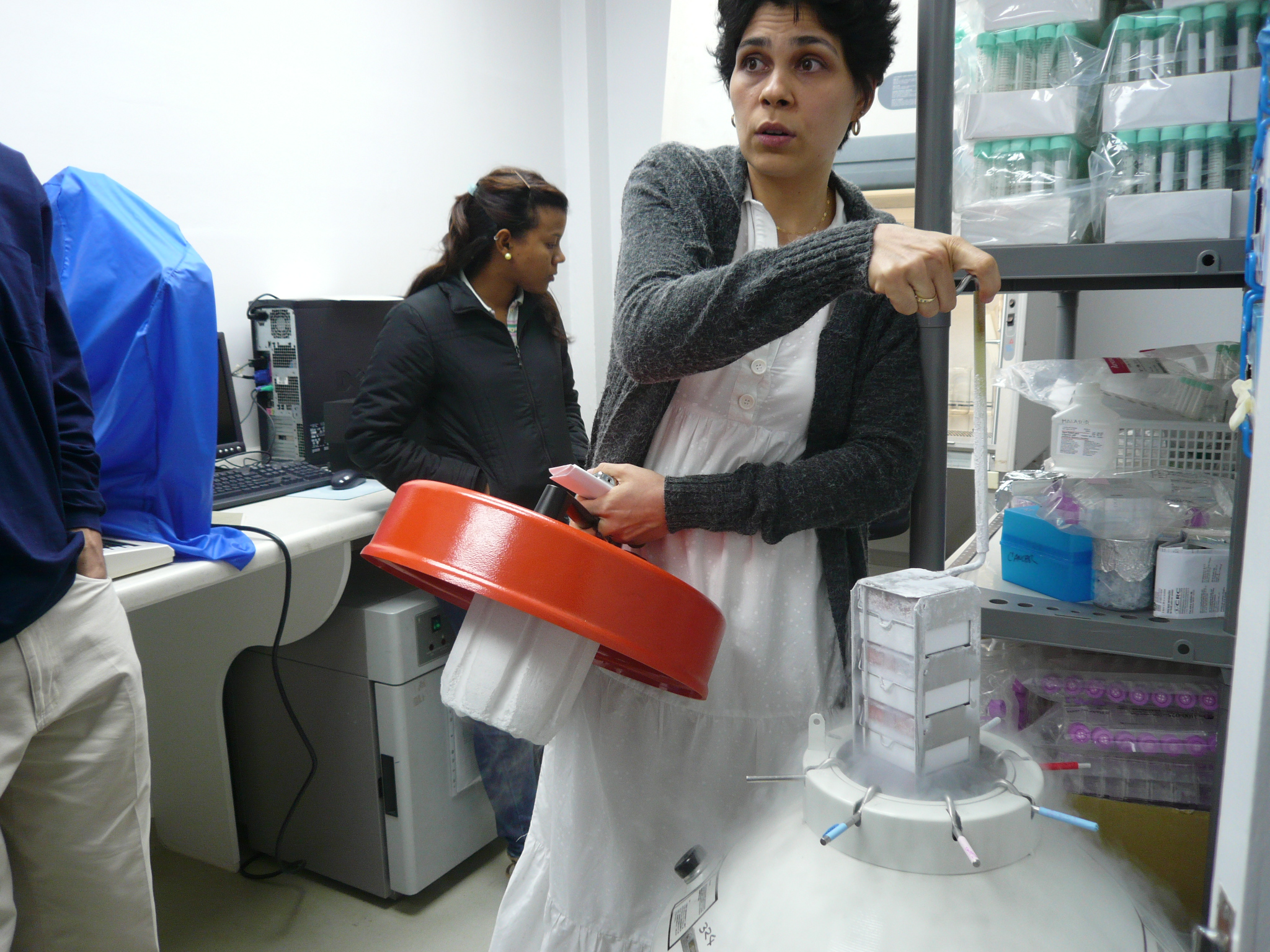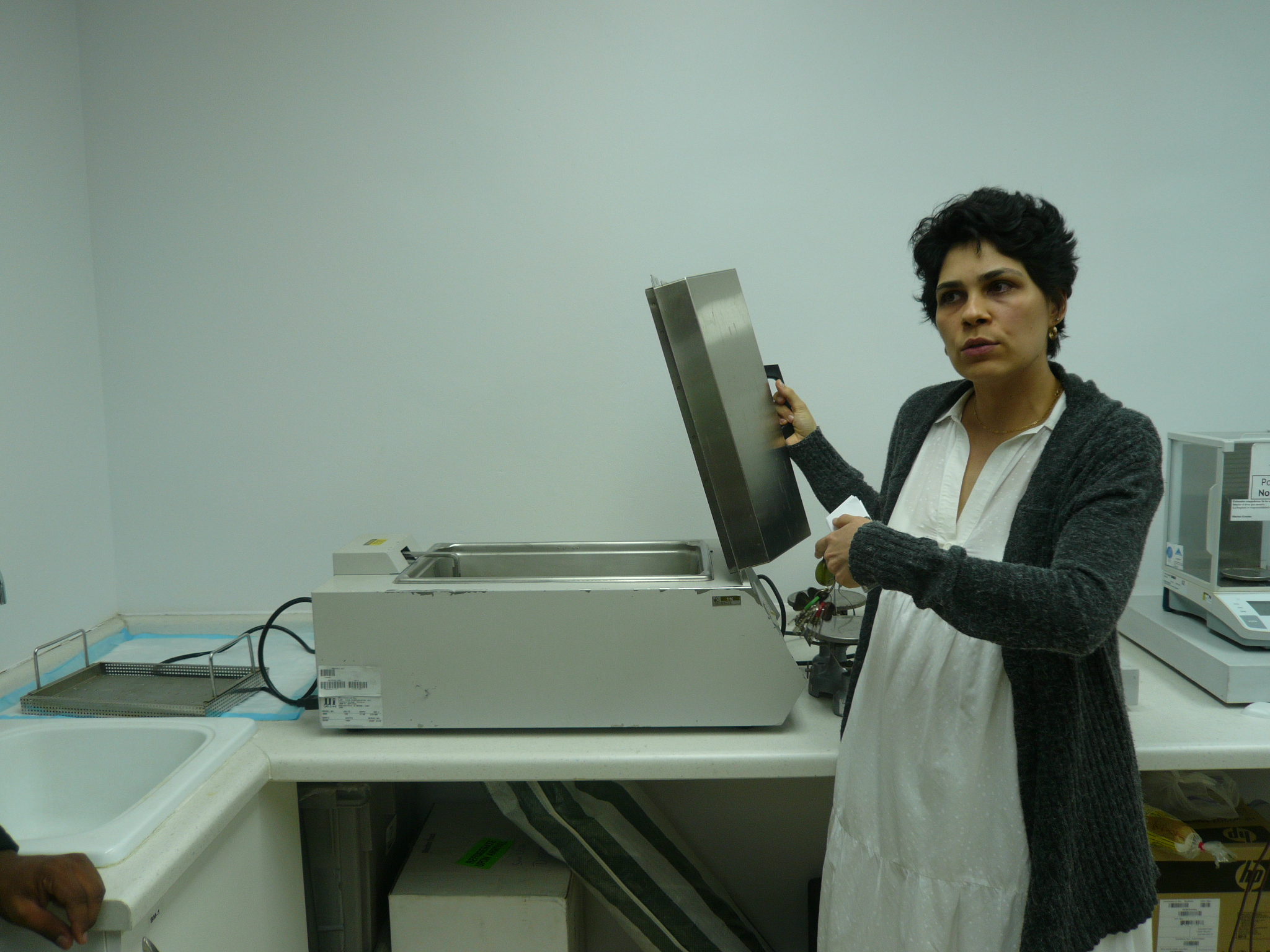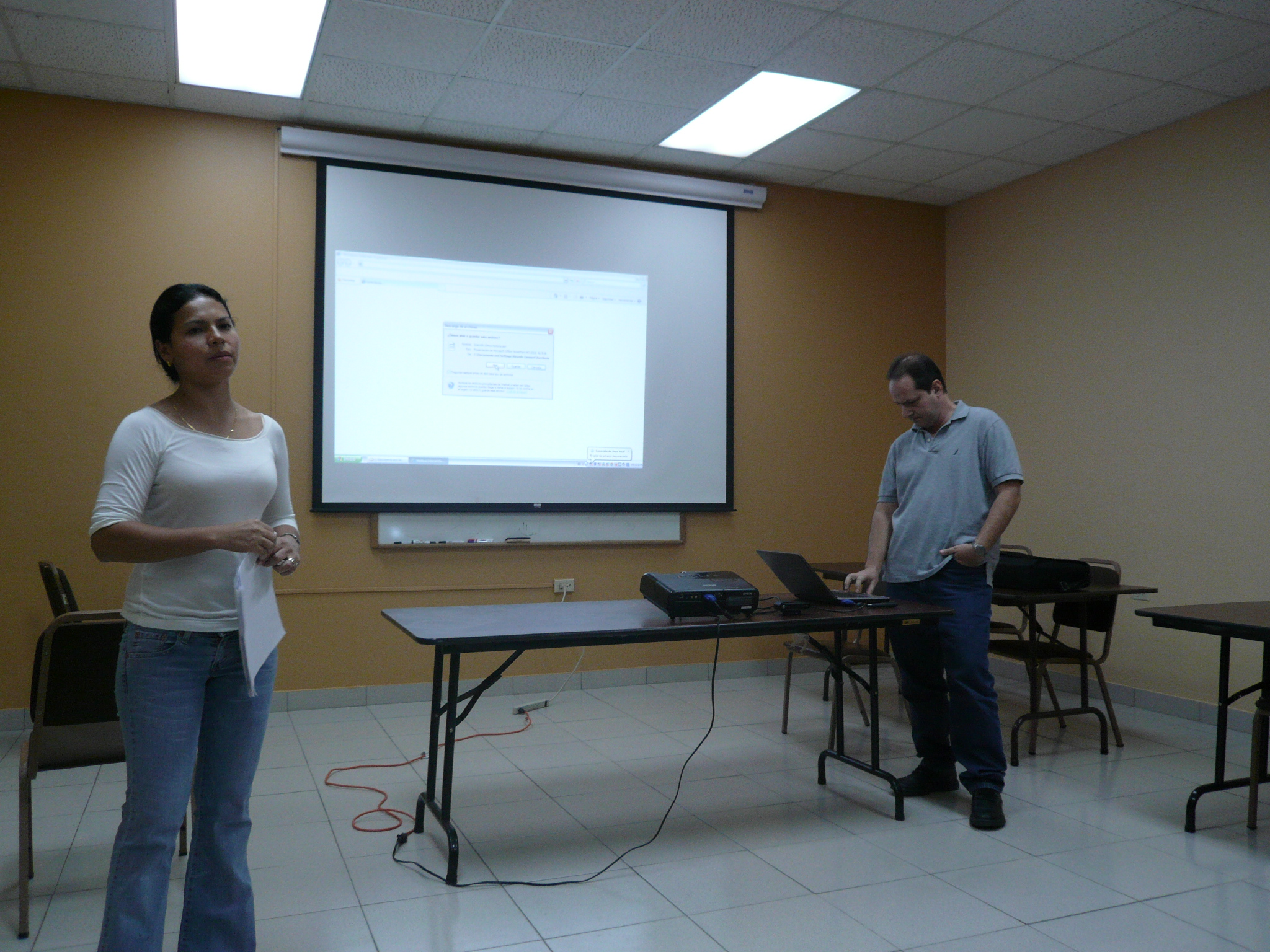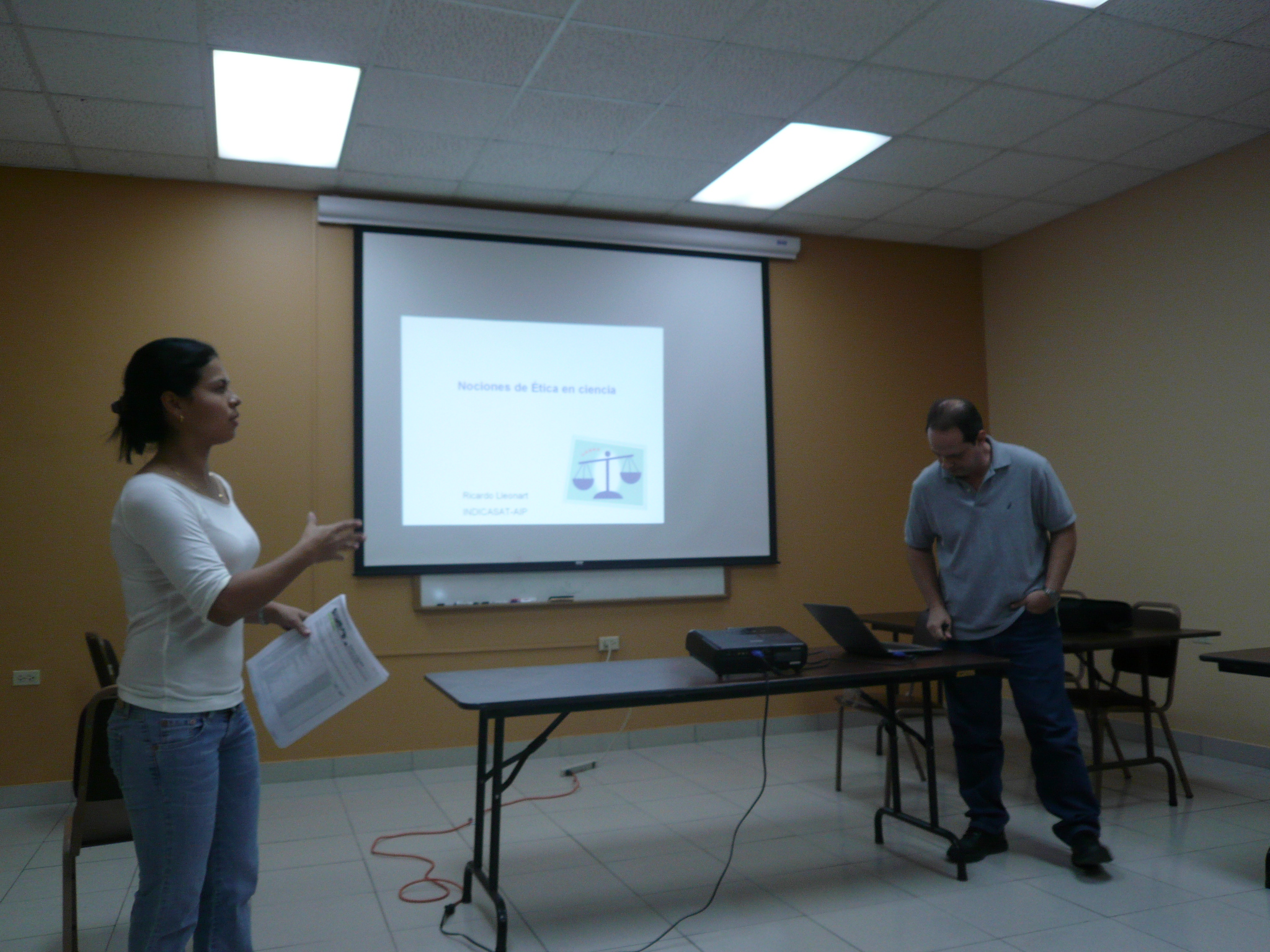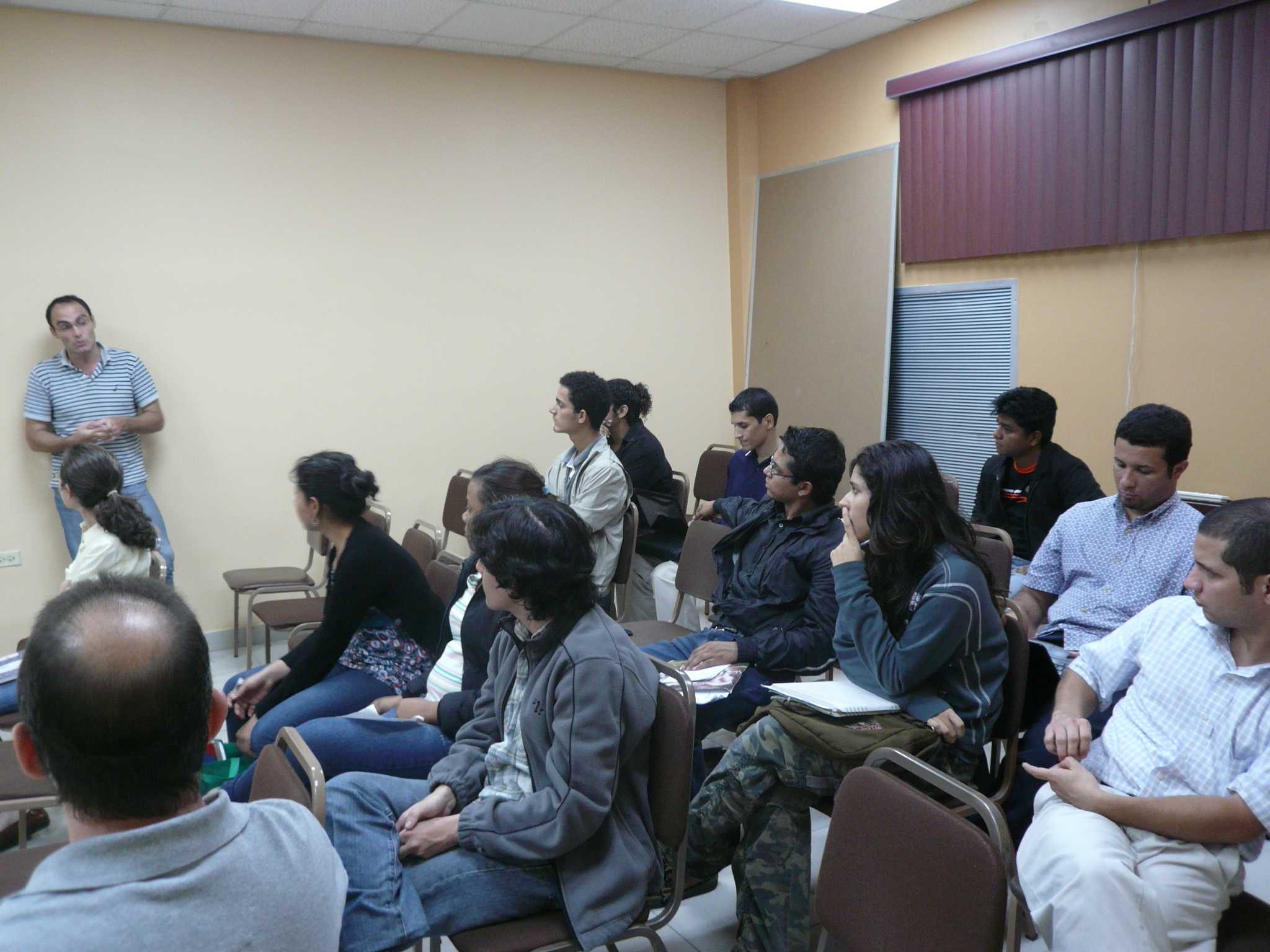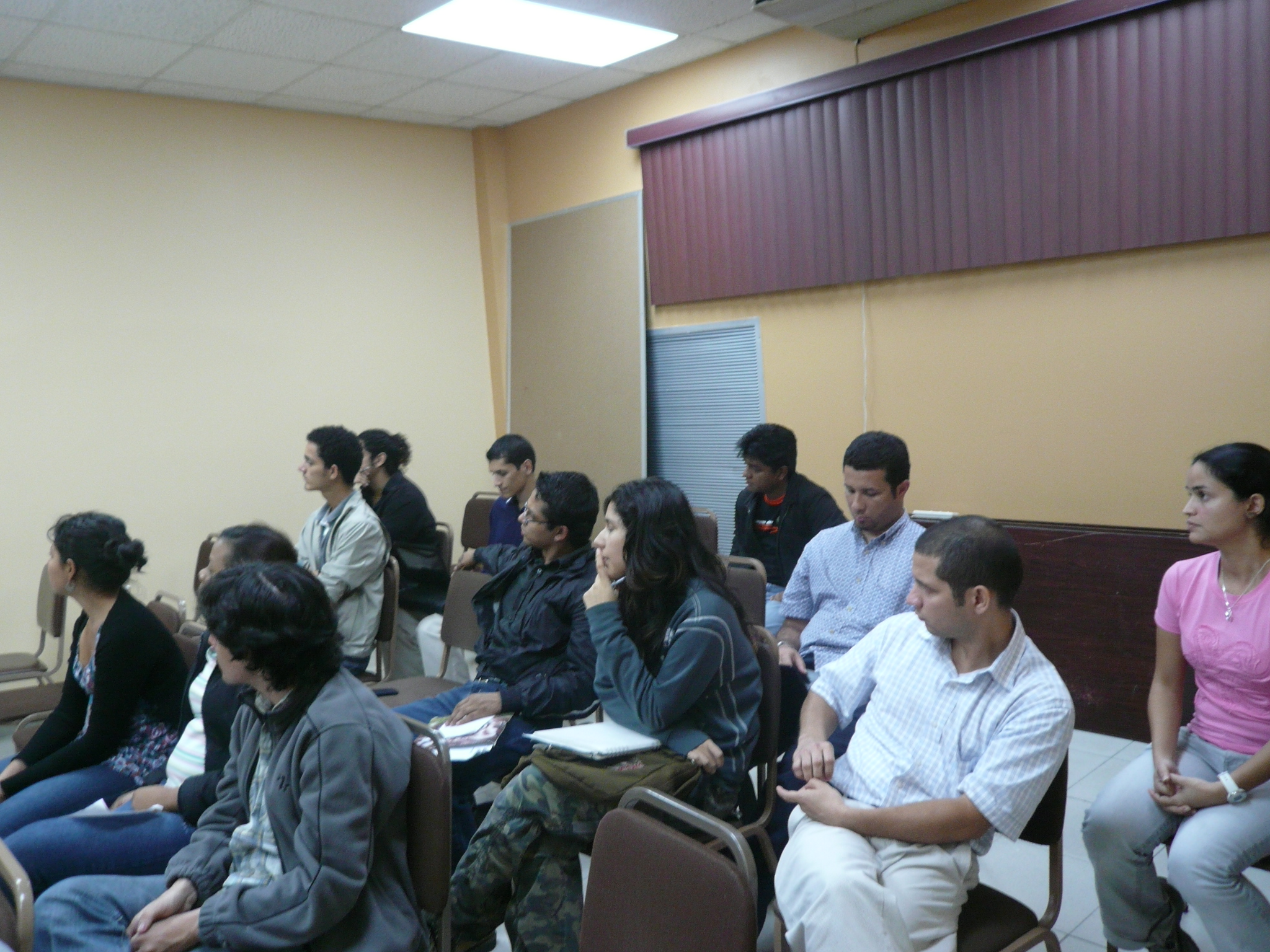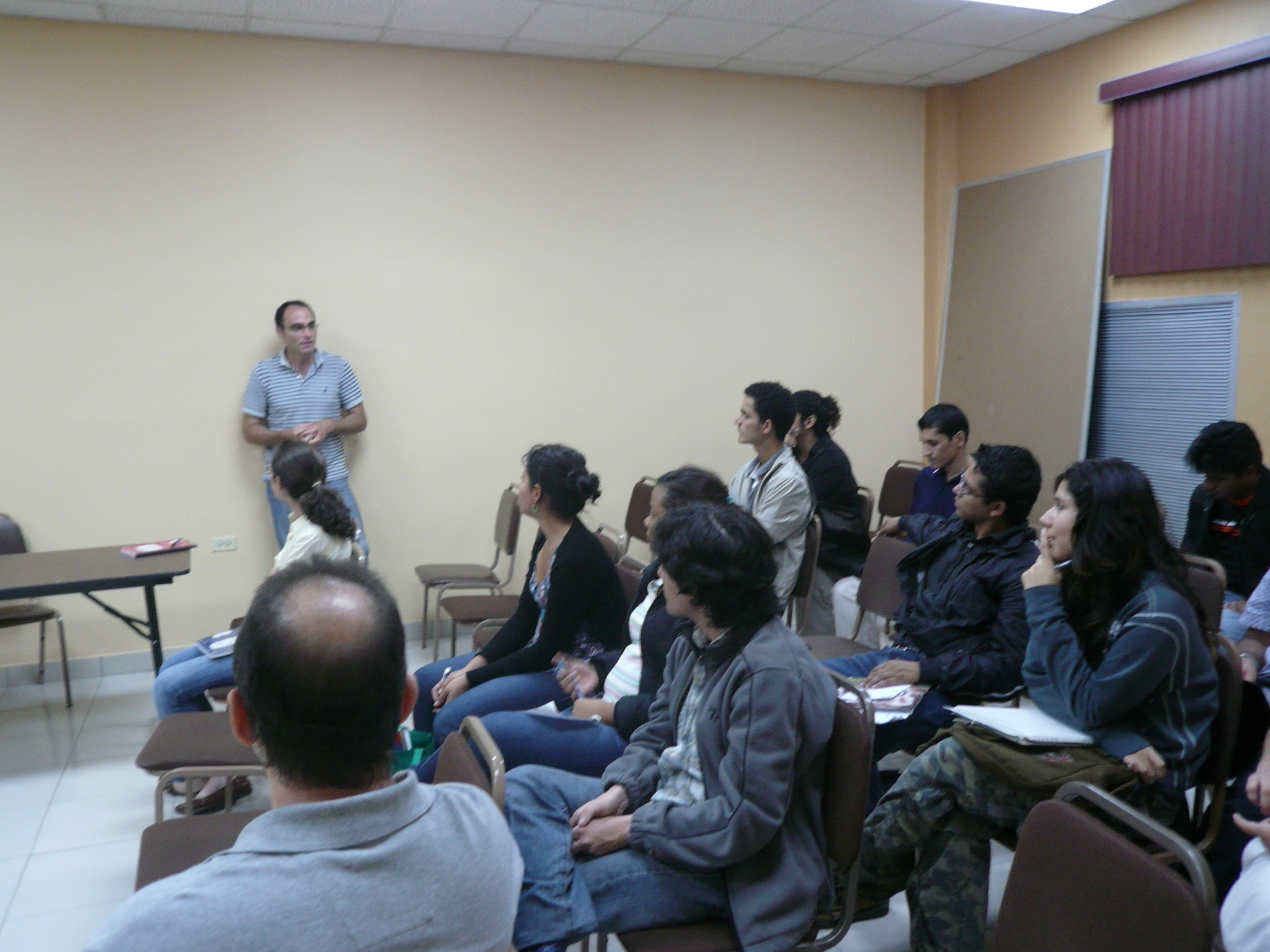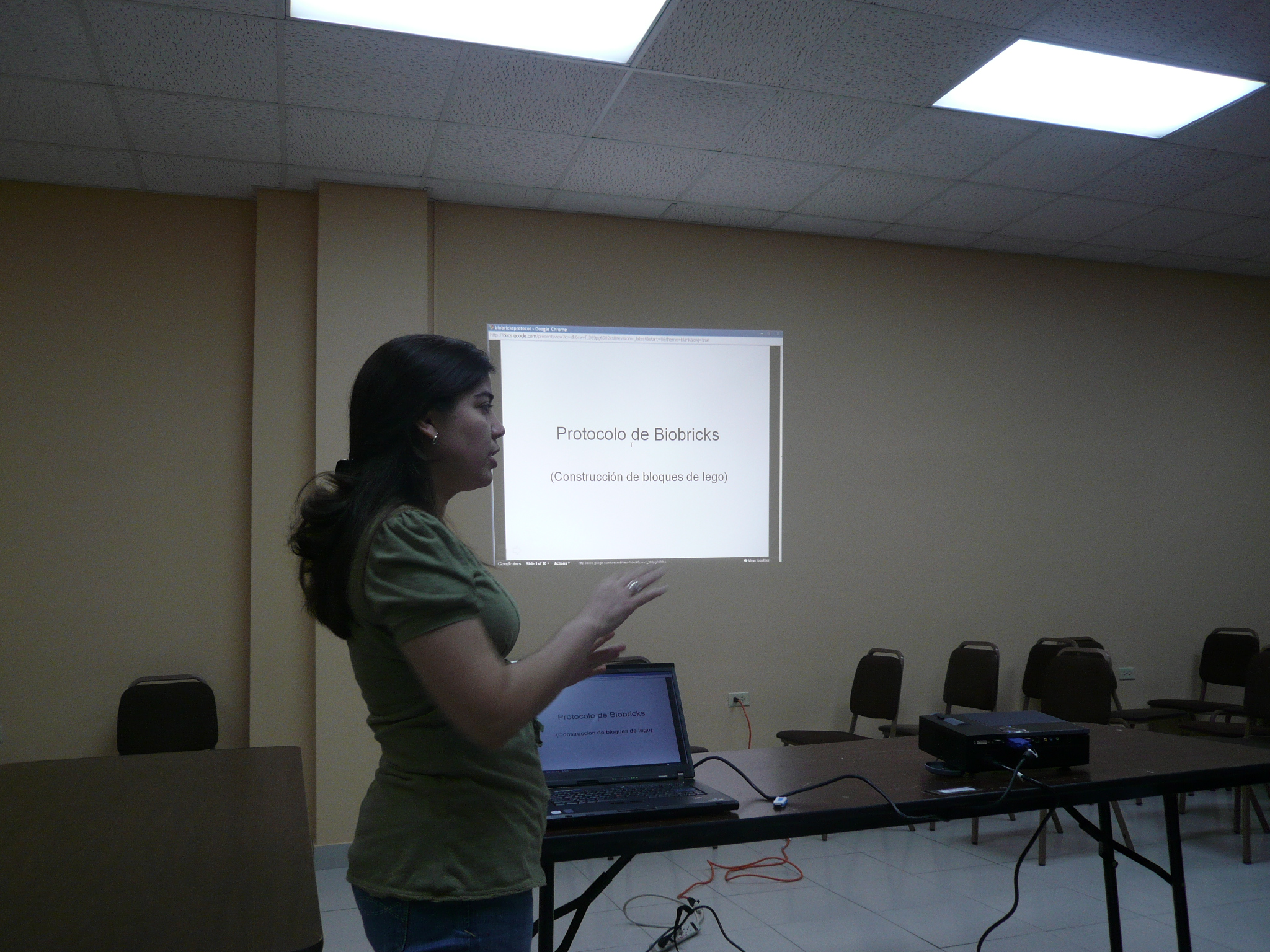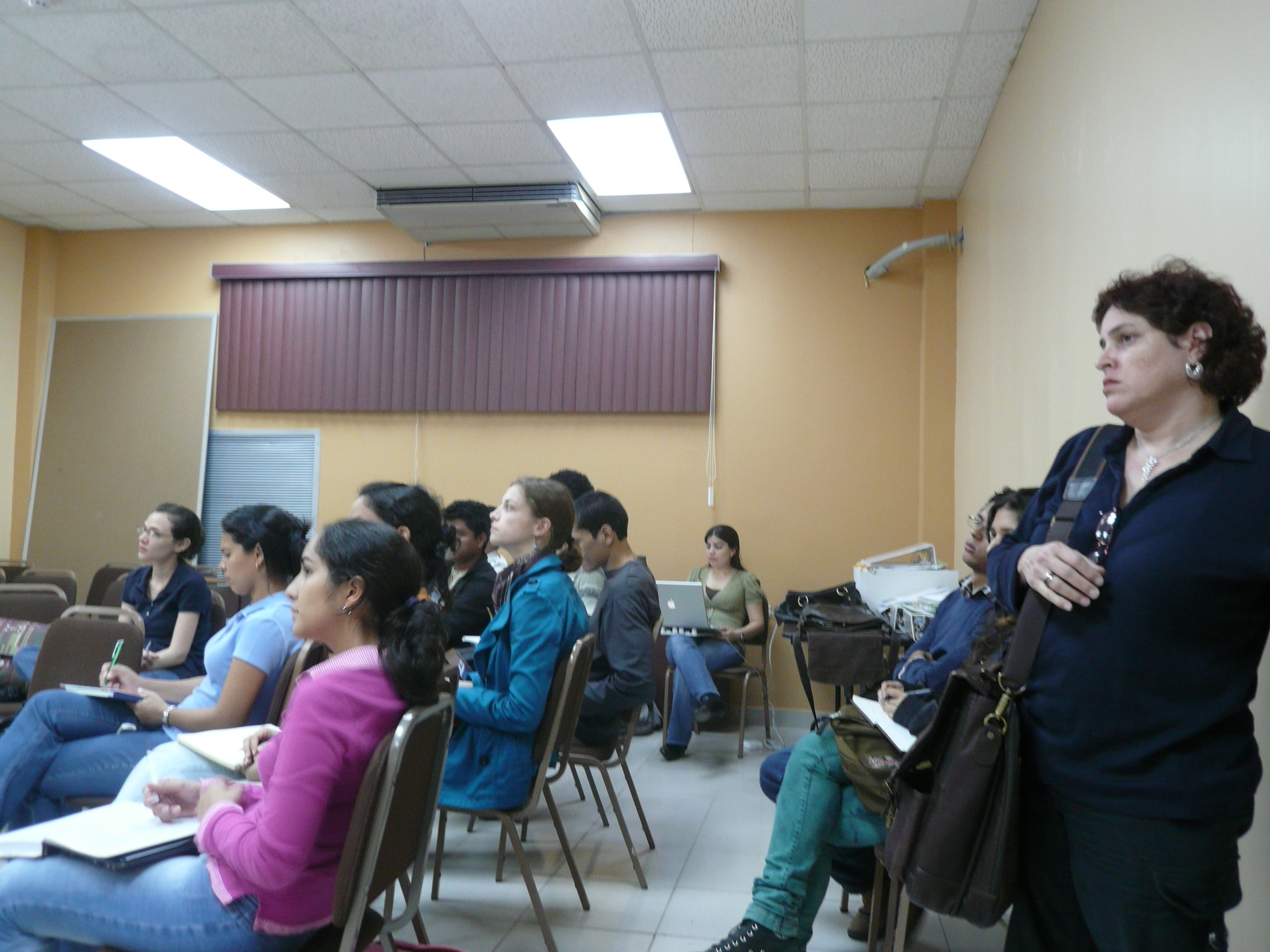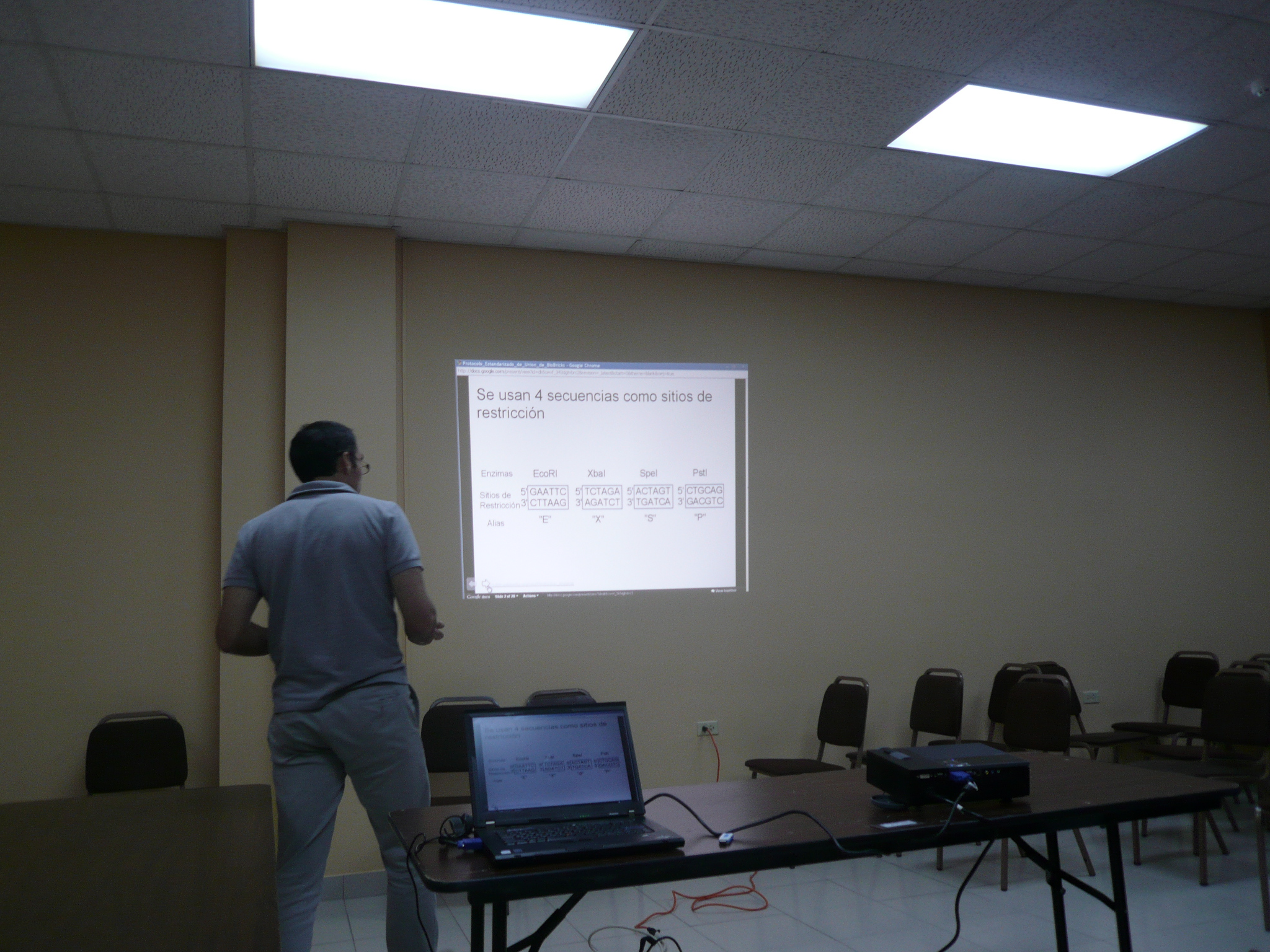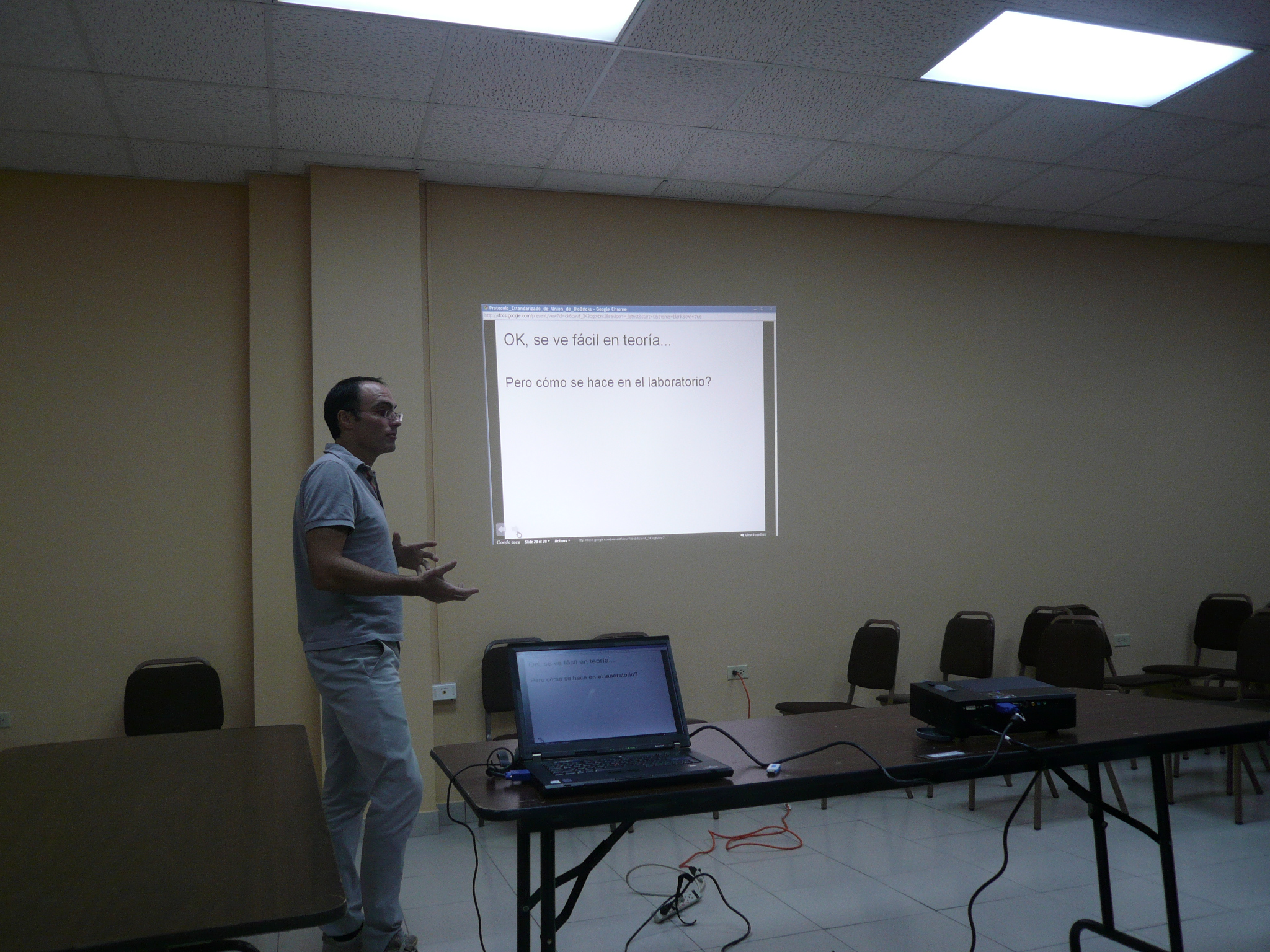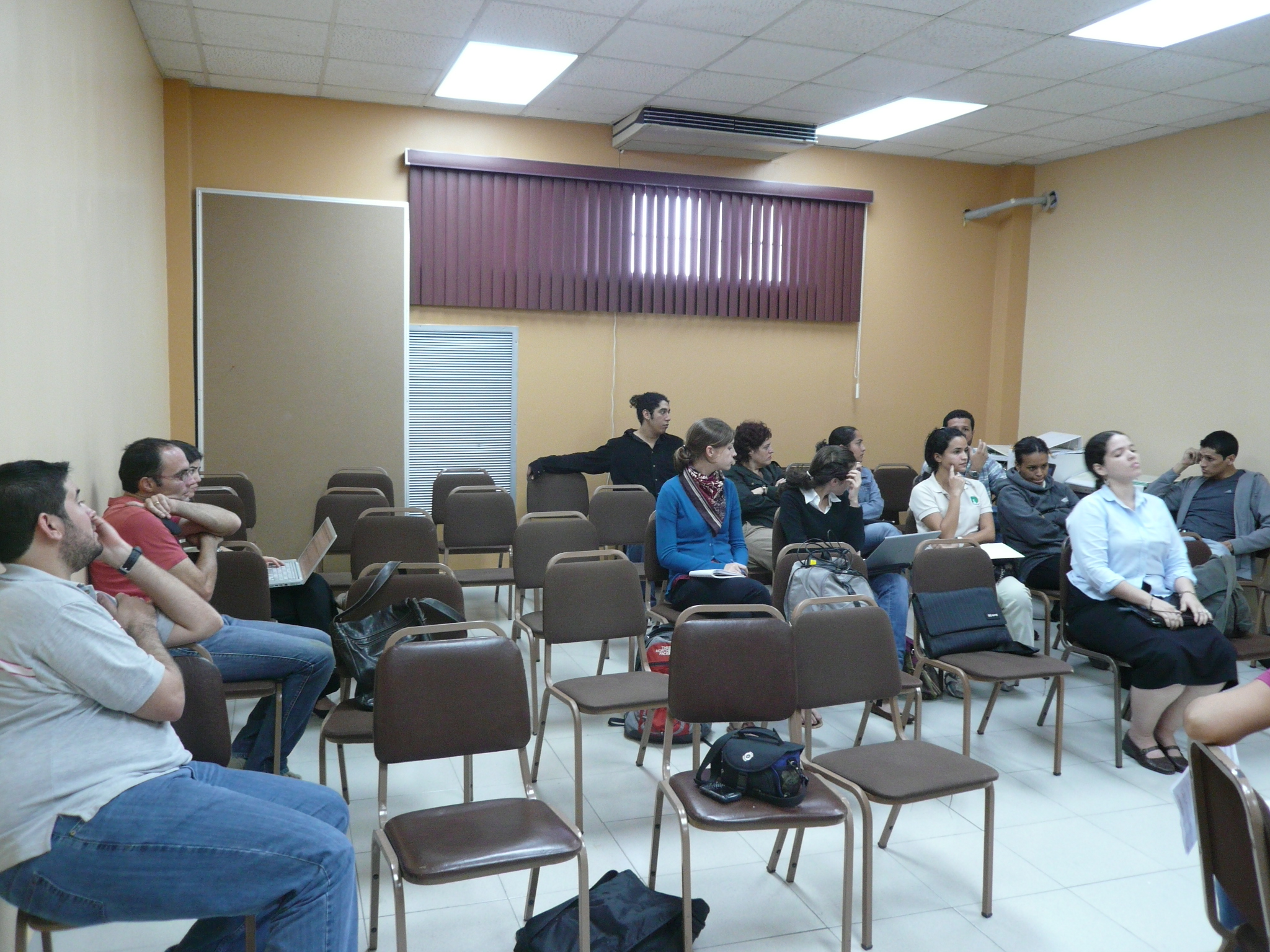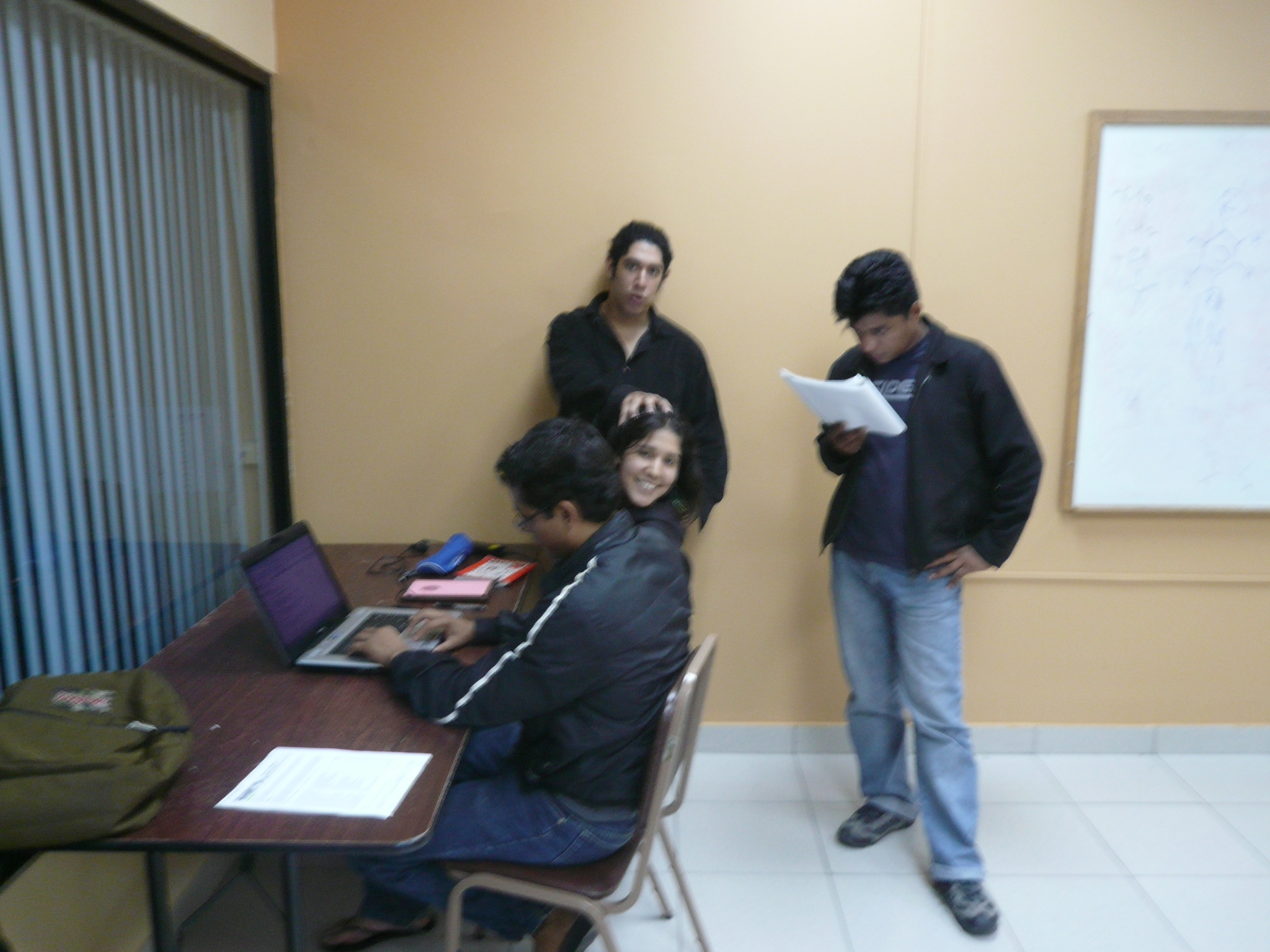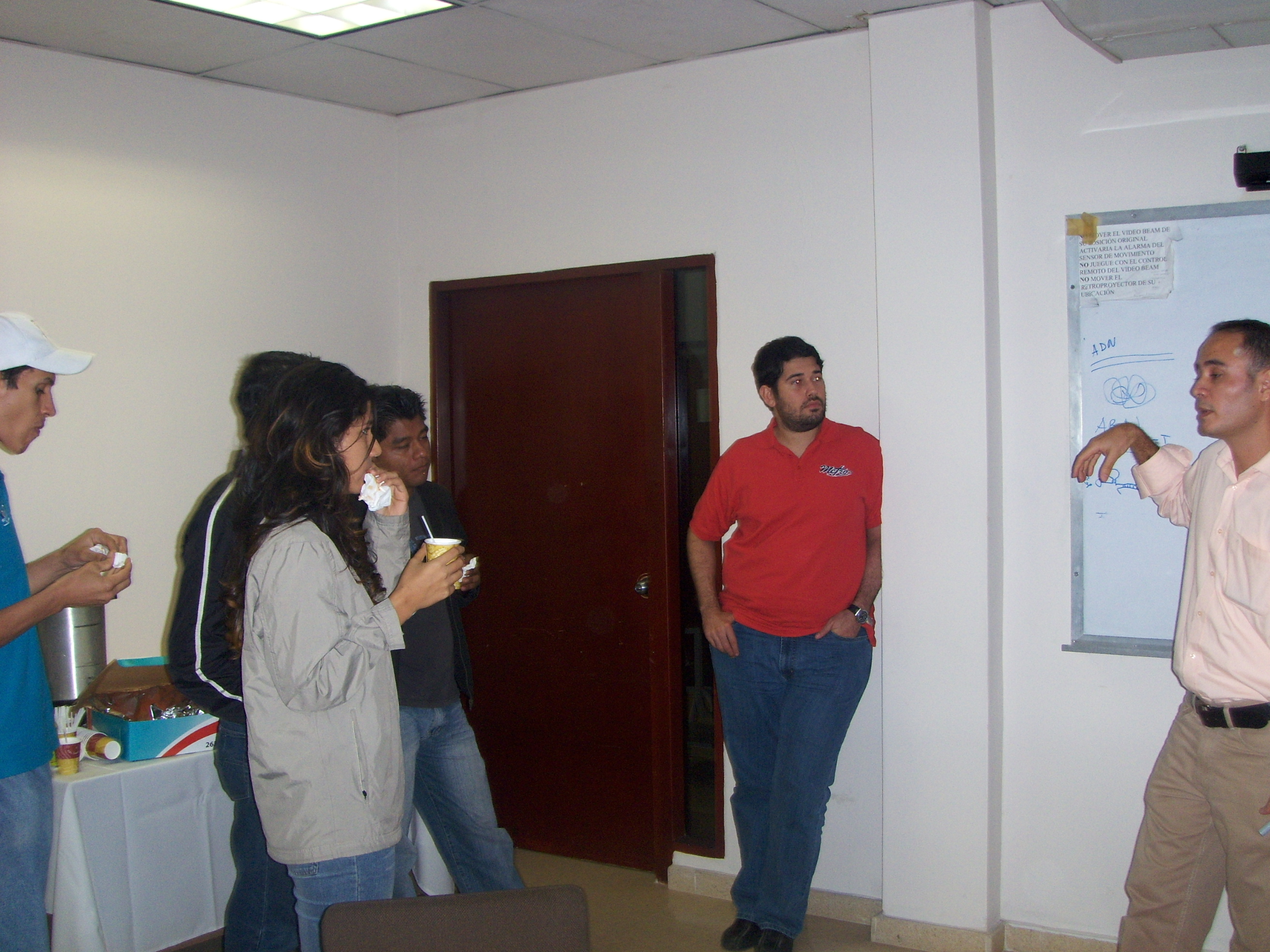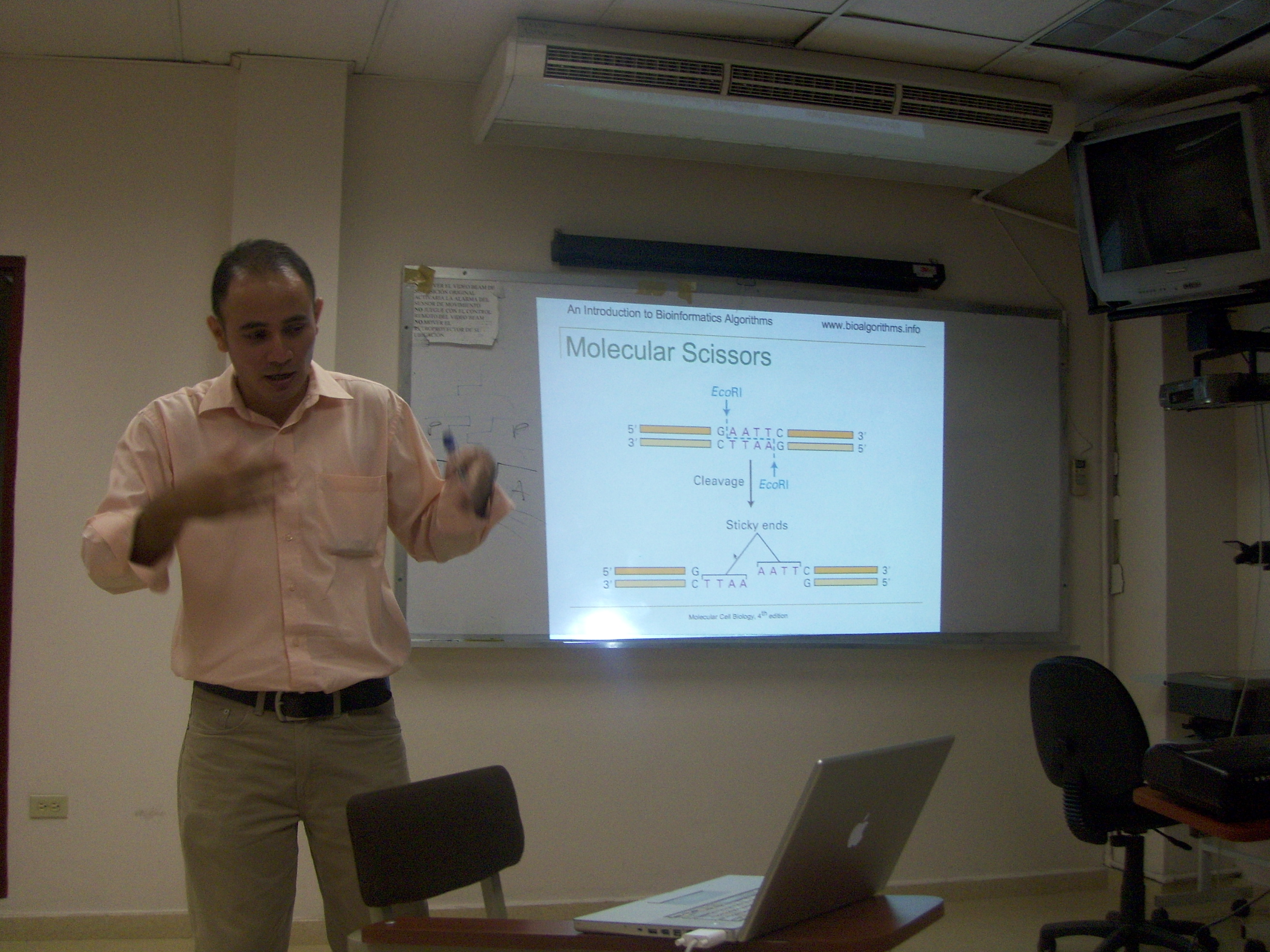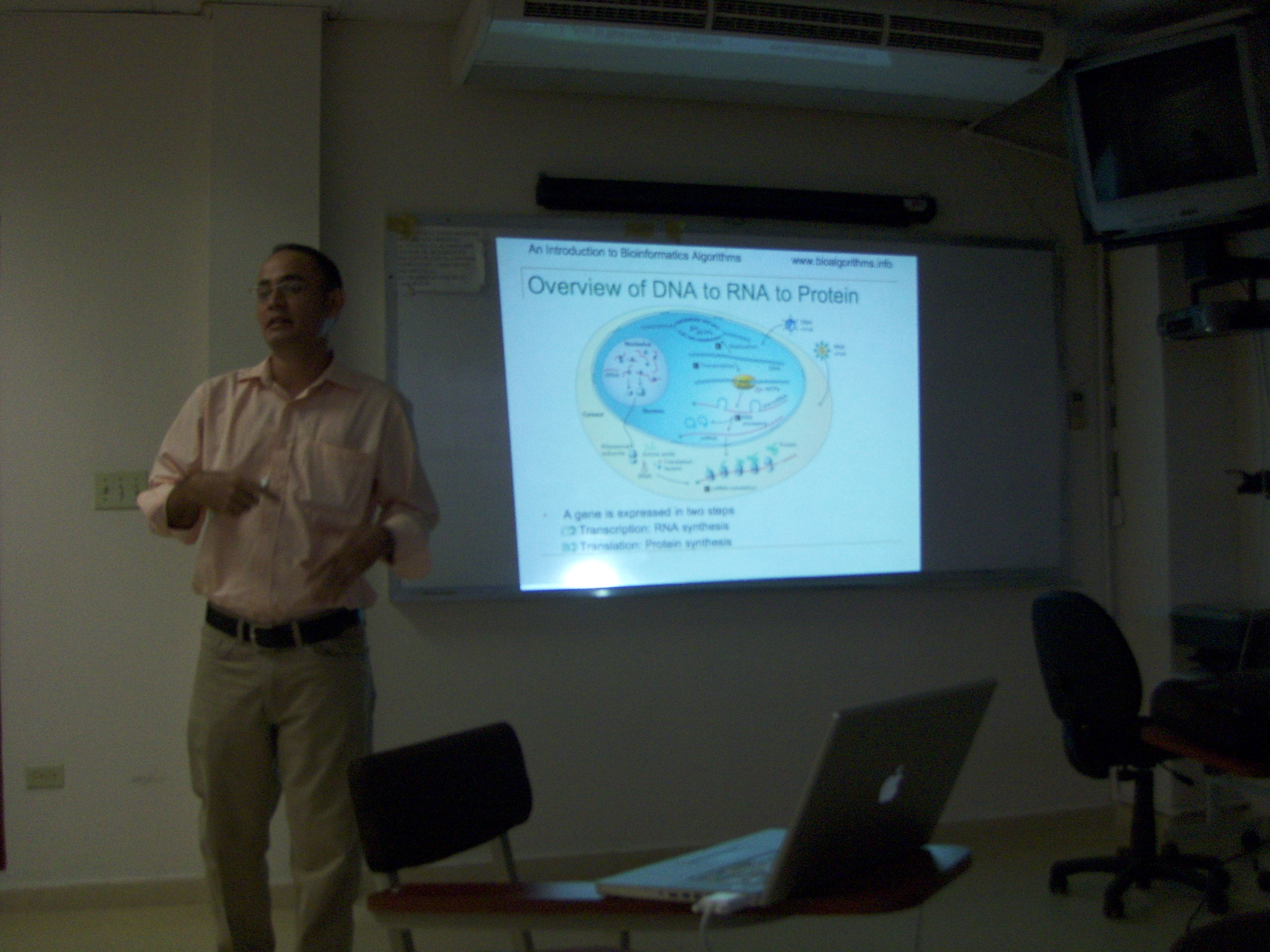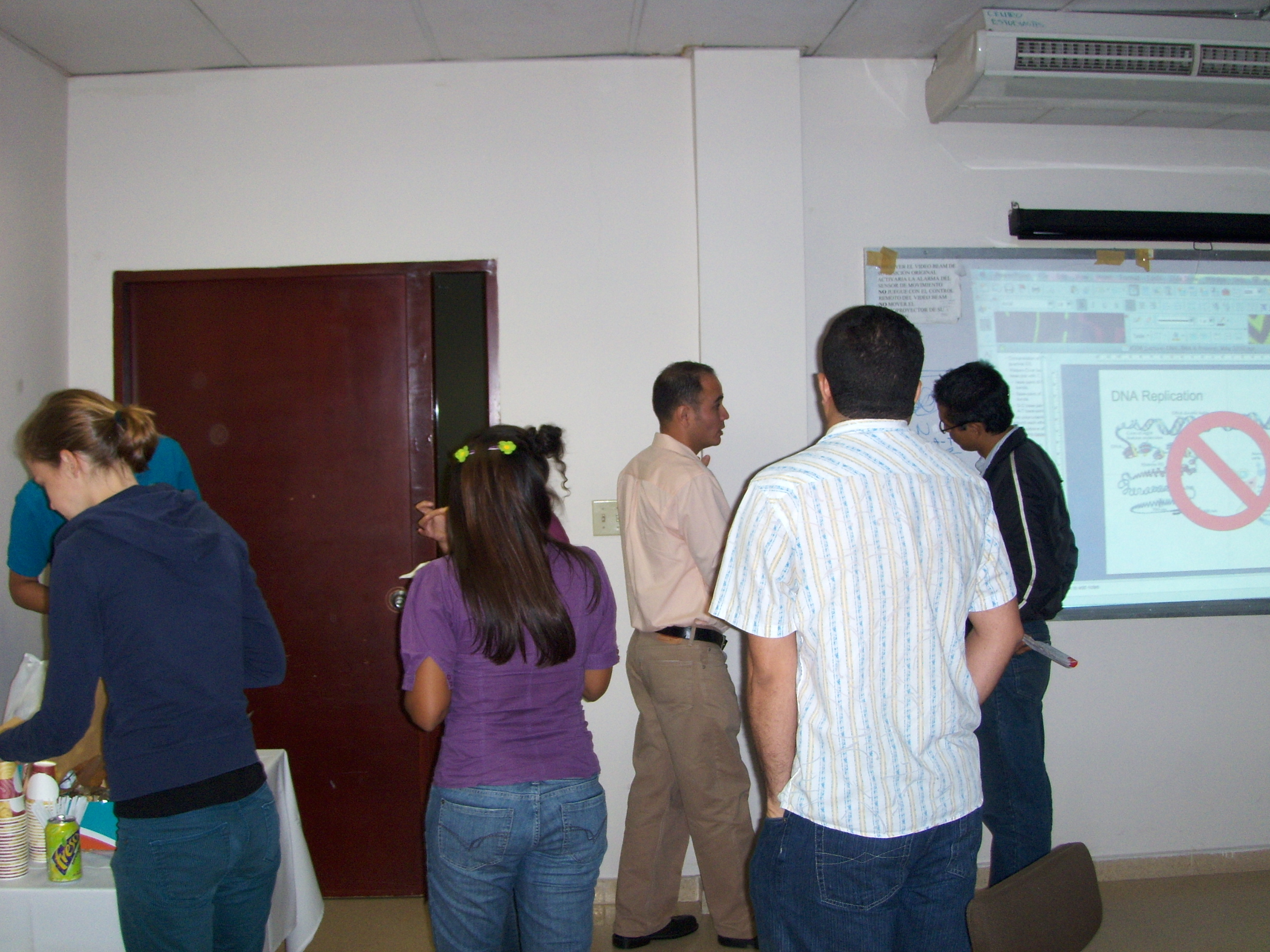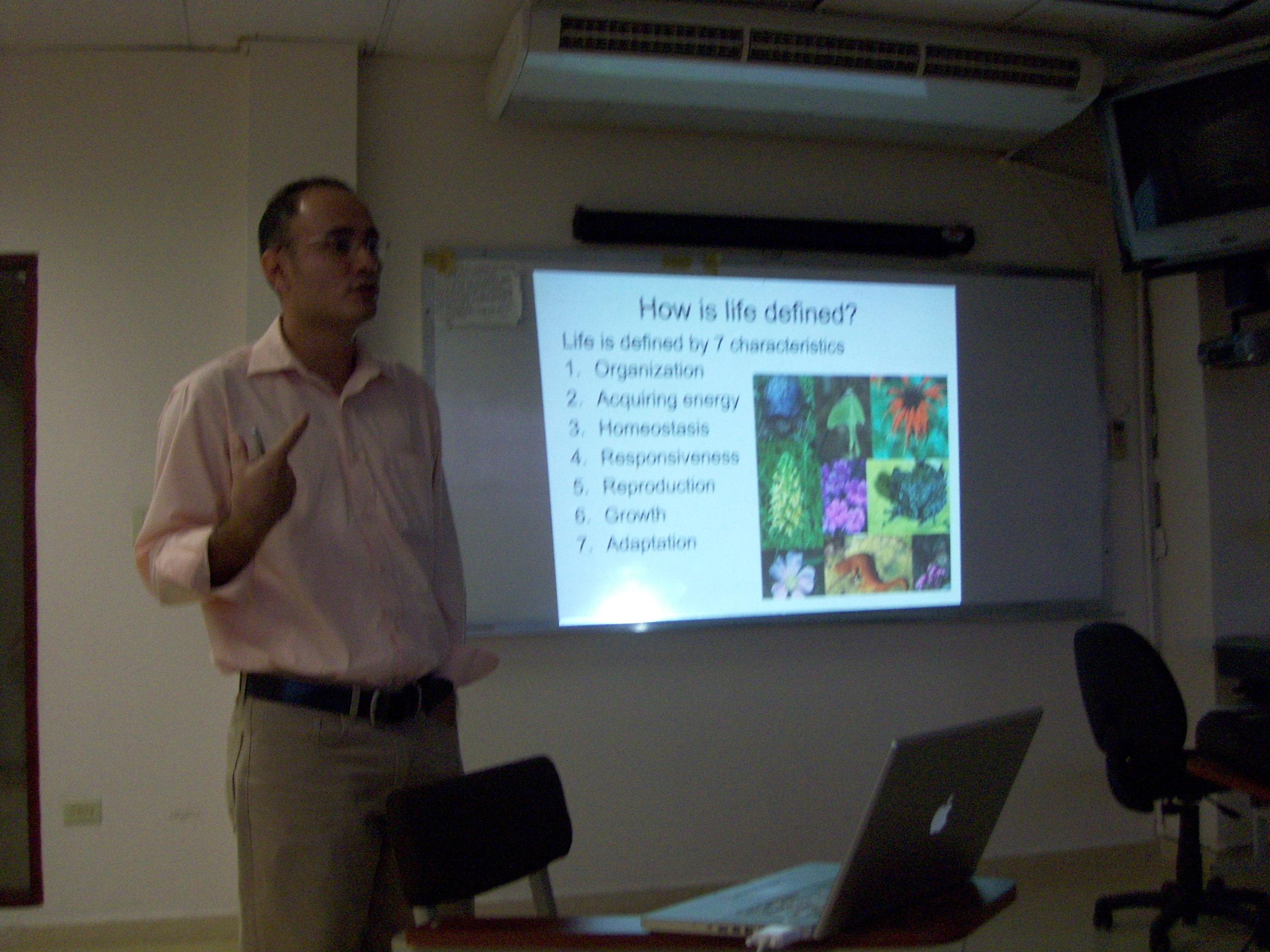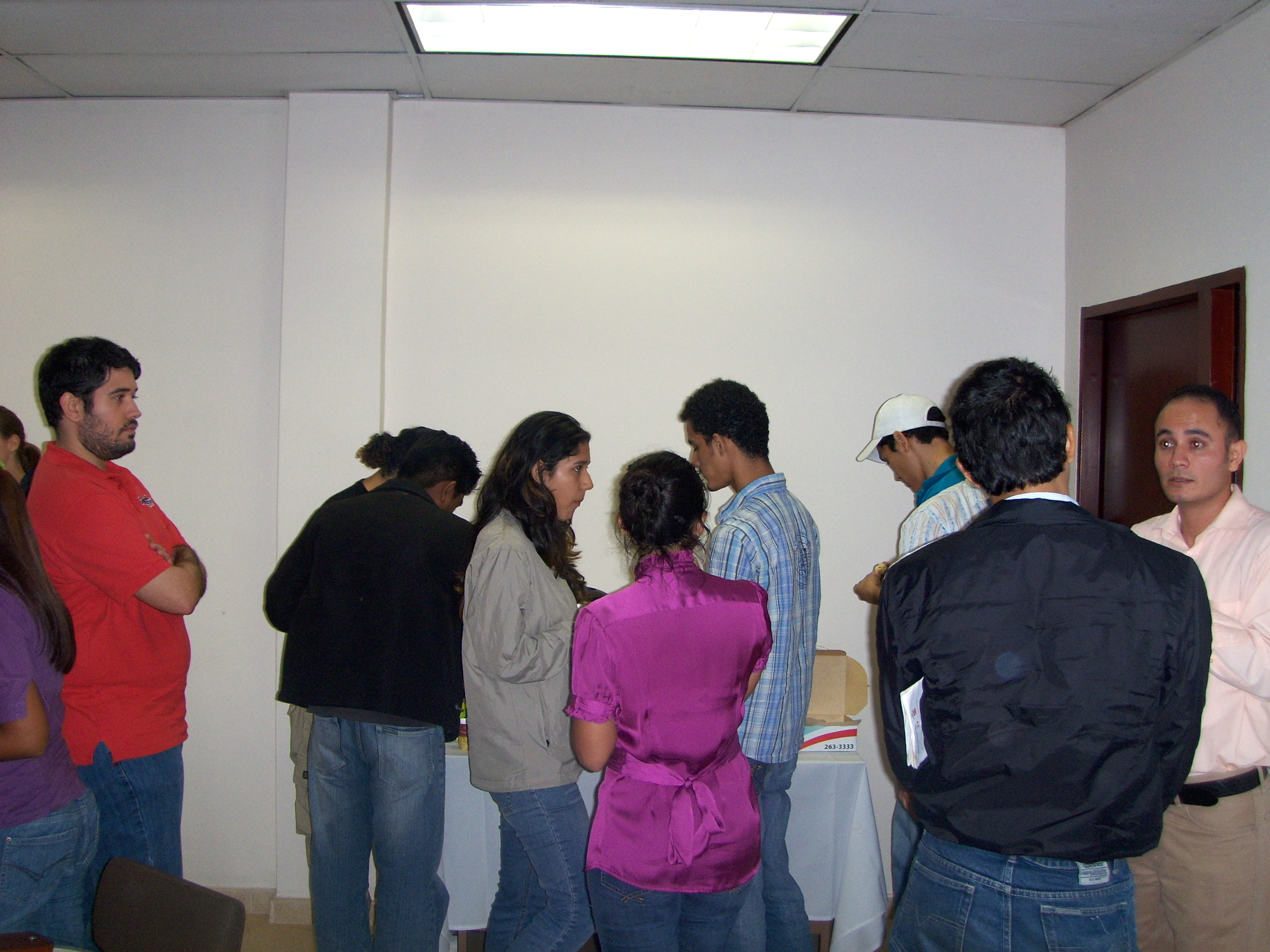Team:Panama/Notebook
From 2010.igem.org
Nikkibiotech (Talk | contribs) (→Meeting July 21) |
Nikkibiotech (Talk | contribs) (→Meeting July 21) |
||
| Line 140: | Line 140: | ||
'''Electrophoresis of the digested parts:''' | '''Electrophoresis of the digested parts:''' | ||
| - | 4% 3:1 Agarose (Amresco, Cat no: 9012-36-6) | + | |
| - | 100 TBE 1X. | + | 4% 3:1 Agarose (Amresco, Cat no: 9012-36-6) |
| - | 4g of agarose | + | |
| - | Ethidium bromide. | + | 100 TBE 1X. |
| + | |||
| + | 4g of agarose | ||
| + | |||
| + | Ethidium bromide. | ||
| + | |||
Agarose gel: | Agarose gel: | ||
In each well we added 20 ul of sample, plus 2ul of loading buffer. Total volume=22ul. | In each well we added 20 ul of sample, plus 2ul of loading buffer. Total volume=22ul. | ||
| - | Results | + | Results: We could visualize the biobrick parts. |
| - | We could visualize the biobrick parts. | + | |
| + | Transformation of E. coli using the part terminator, for which we followed the BioBrick protocol. | ||
| + | |||
| + | |||
| + | '''July 29''' | ||
| + | |||
| + | We again performed the E. coli transformation, with three BioBrick parts. | ||
| + | |||
| + | ''Electrophoresis'' | ||
| + | |||
| + | 70mL of TBE 1X | ||
| + | |||
| + | 0,7g of agarose | ||
| - | + | In each well, we added 2ul of loading buffer and 5ul of the sample. Final volume 7ul. | |
| - | + | ||
===Meeting June 26=== | ===Meeting June 26=== | ||
Revision as of 00:53, 11 October 2010
Republic of Panama
Situated on the isthmus connecting North and South America, it
is bordered by Costa Rica to the northwest, Colombia to the southeast,
the Caribbean Sea to the north and the Pacific Ocean to the south.
Republic of Panama
Situated on the isthmus connecting North and South America, it is bordered by Costa Rica to the northwest, Colombia to the southeast, the Caribbean Sea to the north and the Pacific Ocean to the south.

iGEM PANAMA
In this picture: Carolina, Yisett, Claudio, Nicole, Lorena,
Grimaldo, Natasha, Laura, Ernesto, Dra. Carmenza, Dr. Rao, Ezequiel
iGEM PANAMA
In this picture: Carolina, Yisett, Claudio, Nicole, Lorena, Grimaldo, Natasha, Laura, Ernesto, Dra. Carmenza, Dr. Rao, Ezequiel

iGEM PANAMA
In this picture: Yisett, Silke, Yaraví, Carlos, Dr. Patrick
Nee.
iGEM PANAMA
In this picture: Yisett, Silke, Yaraví, Carlos, Dr. Patrick Nee.

iGEM PANAMA
In this picture: Leyda, Zeuz, Laura
iGEM PANAMA
In this picture: Leyda, Zeuz, Laura

iGEM PANAMA
Labs.
iGEM PANAMA
Labs.

Notebook
Idea Project
May 24
Development of a genetically engineered E. coli that can produces the rhamnosyltranferase 1, for the production of a biosurfactant.
Steps to follow:
1.Find the gene sequences in pubmed.
2.In which bacteria is found.
3.After we found the gene, we designed two different set of primers.
4.Look for the sequences of the restriction enzymes E, X, P and S, inside the gene sequence.
5.If we found in the gene sequence a recognition sequence for the restriction enzymes.
6. So we should look for a mutagenesis protocol or kit.
7.We choose the Stratagene lightning mutagenesis kit. We also design three different set of primers, because the base pairs that surround the PstI unwanted sequence were different.
We found a paper which describes the Rhab1, the one we need for our project. This gene is found in Pseudomonas aureginosa We looked for the gene sequence en GeneBank, and this it is:
Rhla (Gene ID: 878955) LOCUS NC_002516 888 bp DNA
Rhlb (Gene ID: 878954) LOCUS NC_002516 1281 bp DNA
Well we found the gene; we analysed and look for the sequence of the restriction sites of E, X, P and S. And sadly we found the sequence of the PstI. That definitely is a setback, but thanks to mutagenesis, we can solve this problem. We design a set of primers, for the amplification of the Rhabl gene. For mutagenesis of our gene we choose the Stratagene lightning mutagenesis kit, and we also design another set of primers. Before this we analysed the gene and check the reading frame and verify which base pair we can be change without changing de amino acids sequence. Here it is the gene sequences, in red the codons we need to mutate.
July 20
Activities:
1.Locate the BioBrick parts that we are going to assembly, in the distribution plates.
RBS: 2M, GFP: 14K, Terminator: 13D & Promoter: 15N
For the extraction we follow the protocol xxx
2.Clone the chosen BioBrick parts in competent E. coli.
We transformed 4 different bacteria, for the different BioBrick plasmids & prepared LB-ampi.
Meeting July 21
The transformed bacteria grew, as expected. We picked one colony for the different parts and inoculated them in LB broth for 16 hours.
July 23
We made streak plates, in LB ampi plates with the transformed bacteria. After the bacteria grew in the plates, were inoculated in LB broth. The incubation time was 48h.
July 26
We performed miniprep, for the E. coli transformed with the RBS, GFP and the promoter plasmid. And then we performed an extraction of the plasmid DNA. DNA concentration was measured with the spectrometer. The measurements were performed with 260nm and 280nm, we obtained:
[RBS]=55,7 ηg/μl
[Promoter]= 7,18 μg/ml
For the analysis of the plasmid size, we prepared a 1% agarose gel.
Plasmids expected size:
RBS: psB1A2=2058bp, insert= 34bp; 2092bp
GFP: psB1A2=2058bp, insert= 742bp; 2800bp
Promoter: psB1A2=2058bp, insert= 45bp; 2103bp
We couldn’t visualize the expected bands, probably because in the first miniprep, we did not obtain enough DNA concentration. For this reason, we incubated more of the transformed E. coli in LB broth for 16h at 37°C.
July 27
Miniprep Today we performed the miniprep of the E. coli transformed with the RBS and Promoter parts. This miniprep was made in triplicate.
Electrophoresis After the miniprep we made an electrophoresis in 1% agarose gel. Also, we measured the DNA concentration with a spectrophotometer:
[RBS]=30,4 ηg/μl
Digestion After the DNA concentration measurement, we performed the digestion of the RBS and Promoter parts.
Digestion mix for the Promoter:
NEBuffer2=5μl
BSA=0,5 μl
EcoRI=1 μl
SpeI=1 μl
DNA=20 μl
H2O=22,5μl
Digestion mix for the RBS:
NEBuffer2=5μl
BSA=0,5 μl
XbaI=1 μl
PstI=1 μl
DNA=20 μl
H2O=22,5μl
July 28
Electrophoresis of the digested parts:
4% 3:1 Agarose (Amresco, Cat no: 9012-36-6)
100 TBE 1X.
4g of agarose
Ethidium bromide.
Agarose gel: In each well we added 20 ul of sample, plus 2ul of loading buffer. Total volume=22ul.
Results: We could visualize the biobrick parts.
Transformation of E. coli using the part terminator, for which we followed the BioBrick protocol.
July 29
We again performed the E. coli transformation, with three BioBrick parts.
Electrophoresis
70mL of TBE 1X
0,7g of agarose
In each well, we added 2ul of loading buffer and 5ul of the sample. Final volume 7ul.
Meeting June 26
At this moment we have two ideas to develop. We are debating which idea is more feasible. Idea #1: Carlos´s team idea We want to produce Rhamnolipid in bacteria (E.coli) to use it as a biosurfactant. We have to see how we can isolate the rhamnolipid and be sure that the translation is functional.
Steps to follow:
1.Amplified the Rhamnosyltransferase 1 complex from Pseudomona auruginosa and clone this fragment. Size aprox 2.2 Kb. 2.Ligation / Transformation 3.Expression with reporter gen. 4.Isolation 5.Is the protein functional? 6.Make sure that the rhamnolipid is produced in prescence of rhamnose and fatty acid.
Notes:
We can see the reaction (enzymatic measure) by spectrometry. See kind of ligation.
But first, before the amplification we need to design our primers.
Primers design:
1.Check the gene sequence (In GenBank, FASTA format) 2.Design the primer sequence. 3.See kind of cloning. 4.M13 tail for cleavage site. 5.Look for cleavage site inside the rhamnosyltransferase 1 gene for our restriction enzymes. We can´t cut our gene in the process.
In summary the steps that we need to follow are:
I.Primer design II.PCR or amplification III.Cloning IV.Expression V.Sequencing
The most important steps are I and II. We need a good primers design and PCR if we want to have successful.
Idea #2
Ernesto team´s idea
Production of Cecropin compound. We want to produce the antibacterial cecropin compound. Naturally it is produced by insects and plants.
We want to use Anopheles gambiae, cecropin precursor. The gene is about 550 pb.
The steps to follow are the same in both groups.
Both groups have to design the primers, and have all the experimental design for this week.
1.The sequence of the interested gene. 2.Design the primers. (50-100pb more at the beginning and end of the sequence). 3.Check for cloning sites. Which plasmid we are going to use, identify the restriction enzymes. 4.Assemble the blocks. In paper assemble all the system. Promoter + Ribosomal binding site + interest gene + reporter gene + translation end site.
All the design has to be on paper to analyze them and decided which idea is going to be the elected one.
Wetlab 103: Let's make an E. coli that fluoresce (or some simple BioBrick project)
- Instructor: INDICASAT, Dr. Carmenza Spadafora
- Date: (17h00-20h00 11th of June)
- Venue: INDICASAT
- Description: We identify a simple project based on past iGEM work and do our first BioBrick protocol project. Nothing innovative, but an opportunity to practice the protocols.
Wetlab 102: Let's raise a few E. coli
- Instructor: Lorena Coronado and and Dr. Carmenza Spadafora
- Date: (17h00-20h00 11th of June)
- Venue: INDICASAT
- Description: How does one handle E. coli?
Wetlab 101: Tools of the lab and their use
- Instructor: Dr. Patricia Llanes
- Date: (17h00-20h00 9th June)
- Venue: INDICASAT
- Description: How to handle pipettes, clean test tubes, etc.
iGEM workshop follow up: Safety, ethics
- Instructor: Dr. Ricardo Lleonart
- Date: (17h00-20h00 9th of June)
- Venue: INDICASAT
- Description: There is definetly a "safety considerations" requirement and we should address it early.
iGEM workshop follow up: Software tools
- Instructor: Patrick / Sara
- Date: (17h30-20h00 Monday 7th June)
- Venue: INDICASAT
- Description: Software tools available from the workshop.
DNA 104: BioBricks Protocol
- Instructor: Sara/Patrick
- Date: (17h30-20h00 Monday 7th June)
- Venue: INDICASAT
- Description: Introduction to the BrioBricks protocol
INDICASAT lecture: Innovation
- Instructor: Dr. Jagannatha Rao, Director of INDICASAT
- Date: (17h30-20h00 Friday 4th June)
- Venue: INDICASAT
- Description: Dr. Rao's lecture on how to innovate.
INDICASAT lecture: Drug discovery in nature
- Instructor: Dr. Sergio Martinez
- Date: (17h00-20h00 Thursday 3rd June)
- Venue: INDICASAT
- Description:Would be a brainstorming session as students start thinking about projects. It would be GREAT if we could take a molecule discovered by INDICASAT in coral/frogs/nature and put it in E. coli!...
DNA 103: DNA modification, plasmids
- Instructor: Dr. Abby Guerra
- Date: 26 May 17h00-20h00
- Venue: UTP
- Description:Introduction to long tested combinant DNA techniques, the role of plasmids in bacteria, and their use as a vector for DNA modification.
DNA 102: Protein creation relationship to cellular function. 26 May
- Instructor: Dr. Abby Guerra
- Date: 26 May 17h00-20h00
- Venue: UTP
- Description: Introduction to how DNA drives cellular functions by creating proteins
DNA 101: Information store, replication. 26 May
- Instructor: Dr. Abby Guerra
- Date: 26 May 17h00-20h00
- Venue: UTP
- Description: A basic refresher course on how DNA stores information in the cell, and how it is involved in cellular replication.
 "
"







